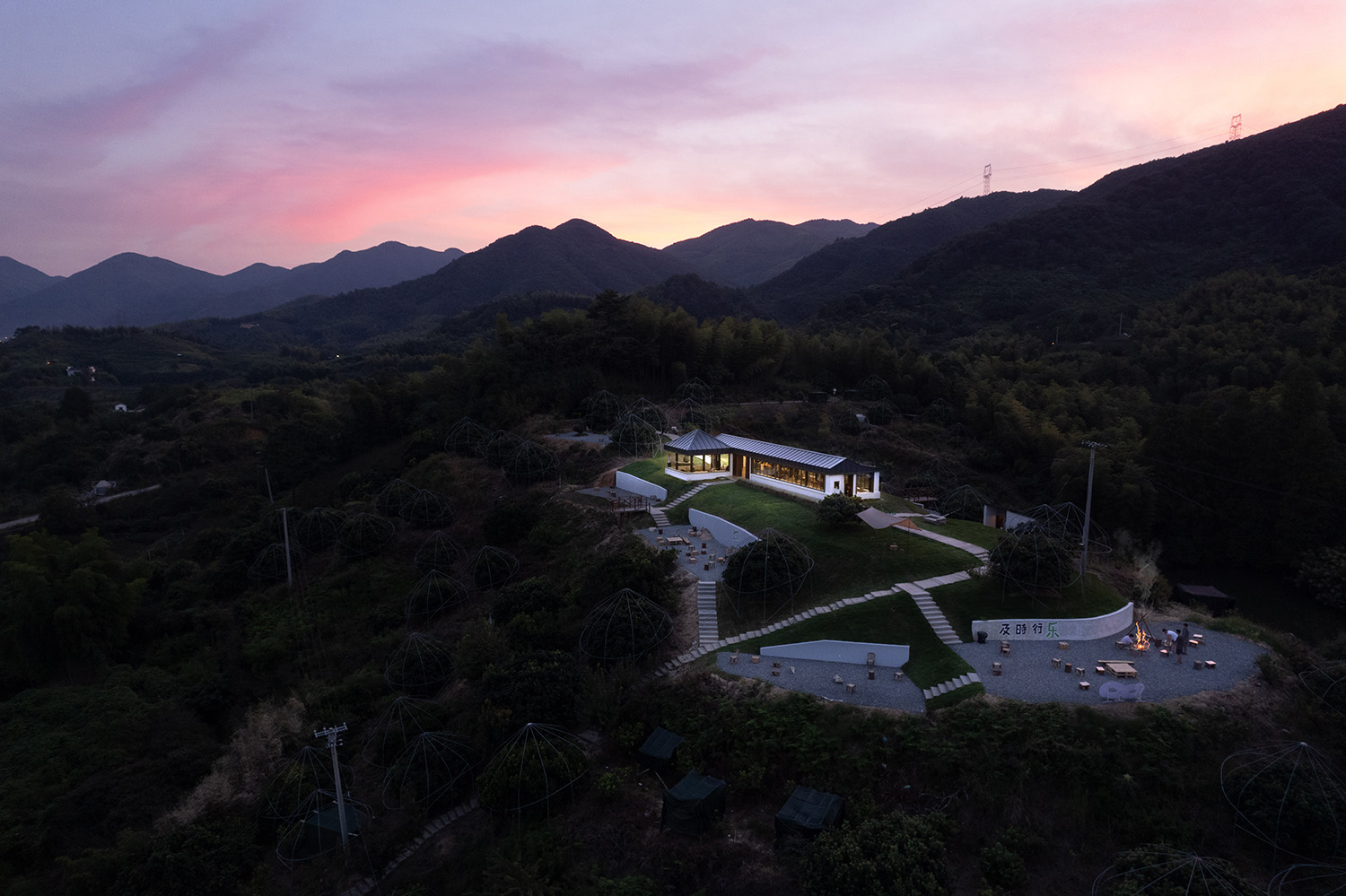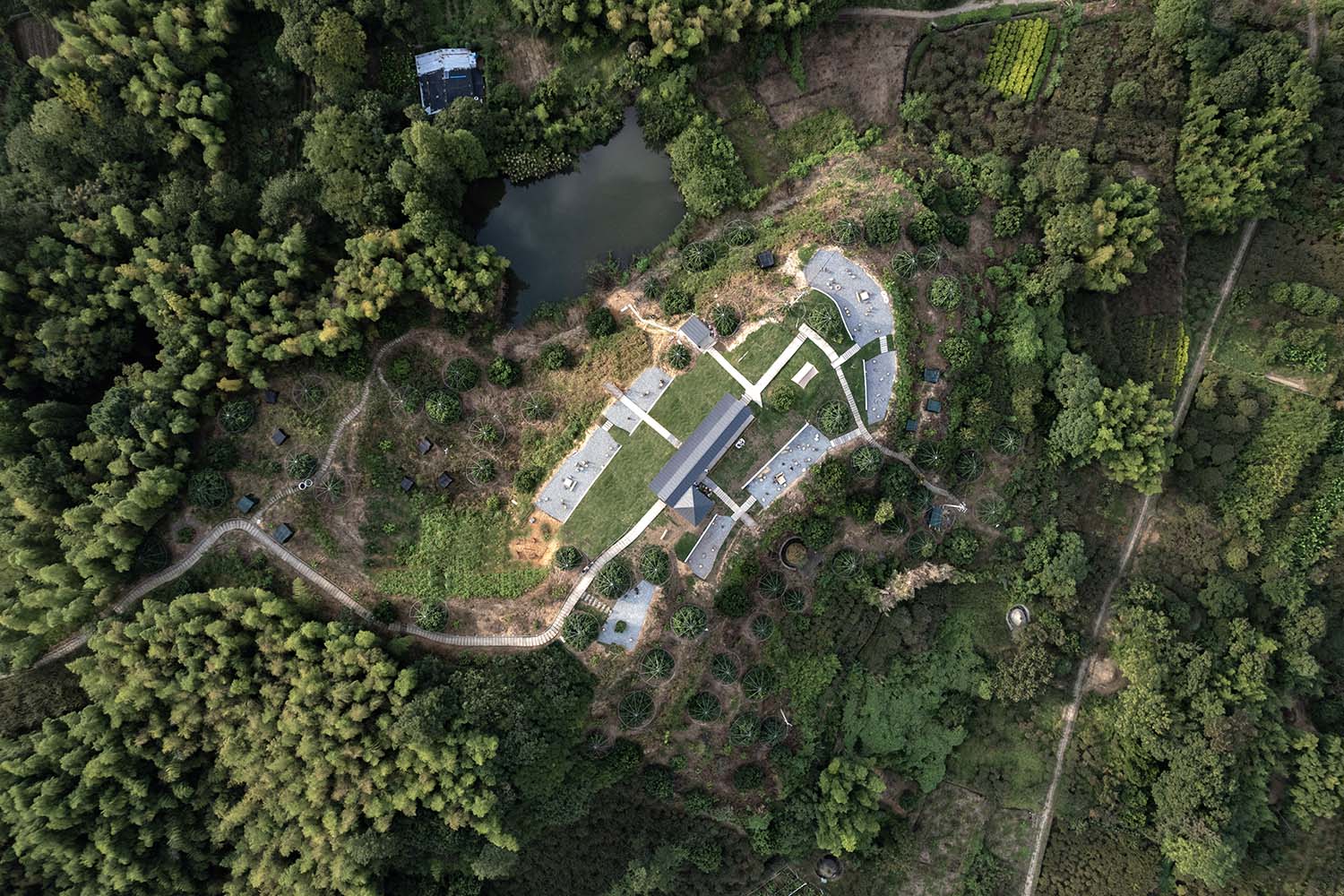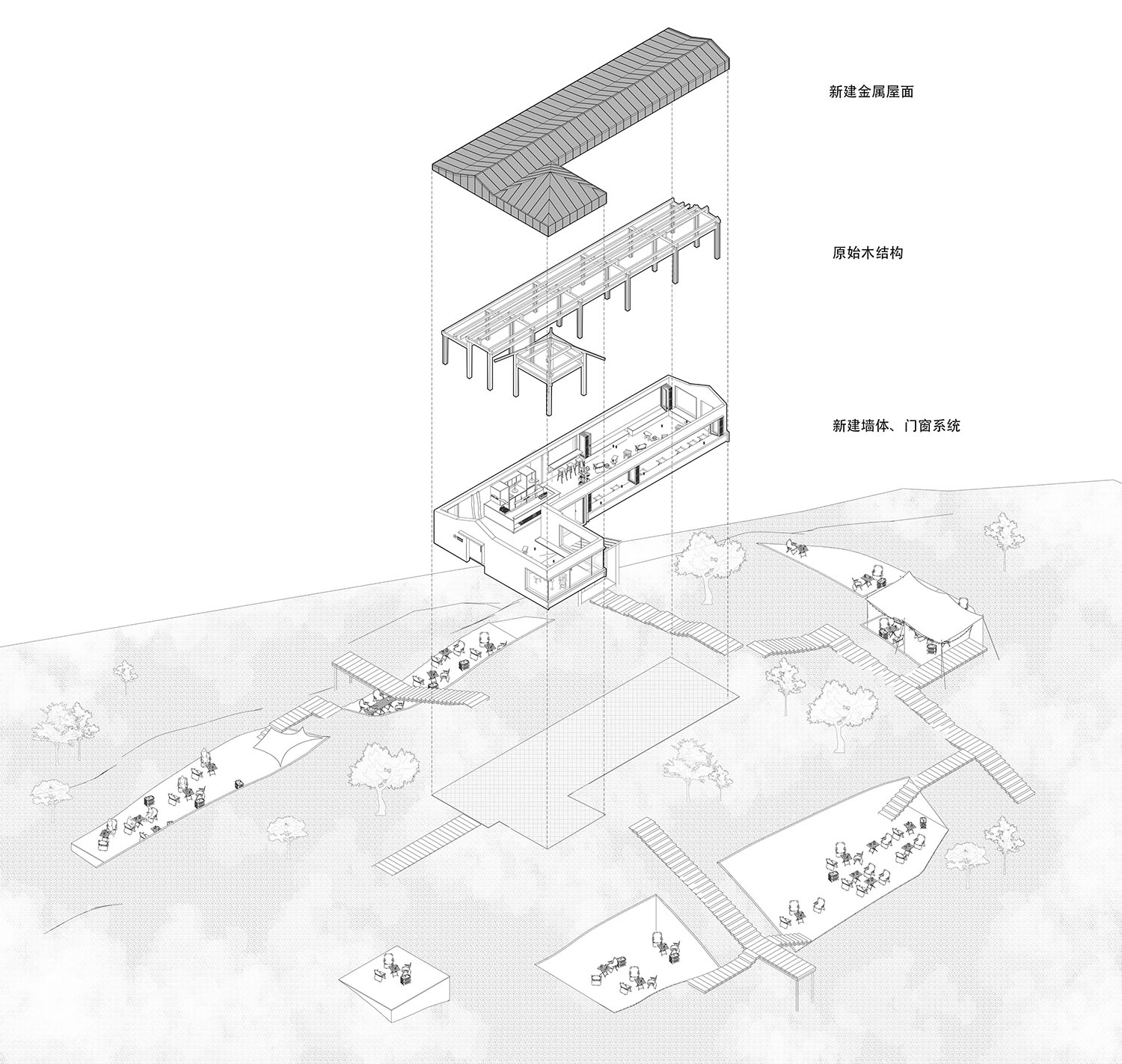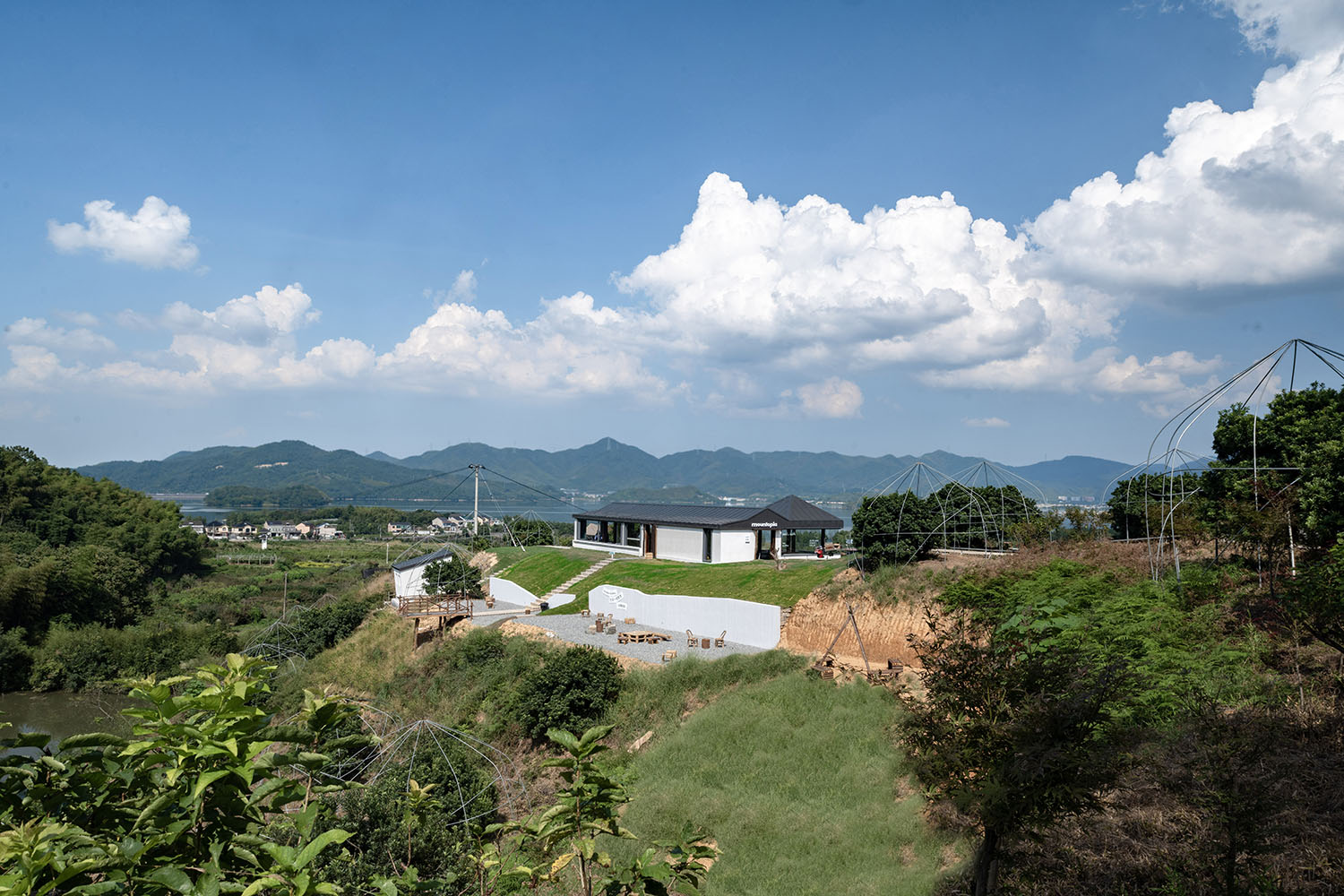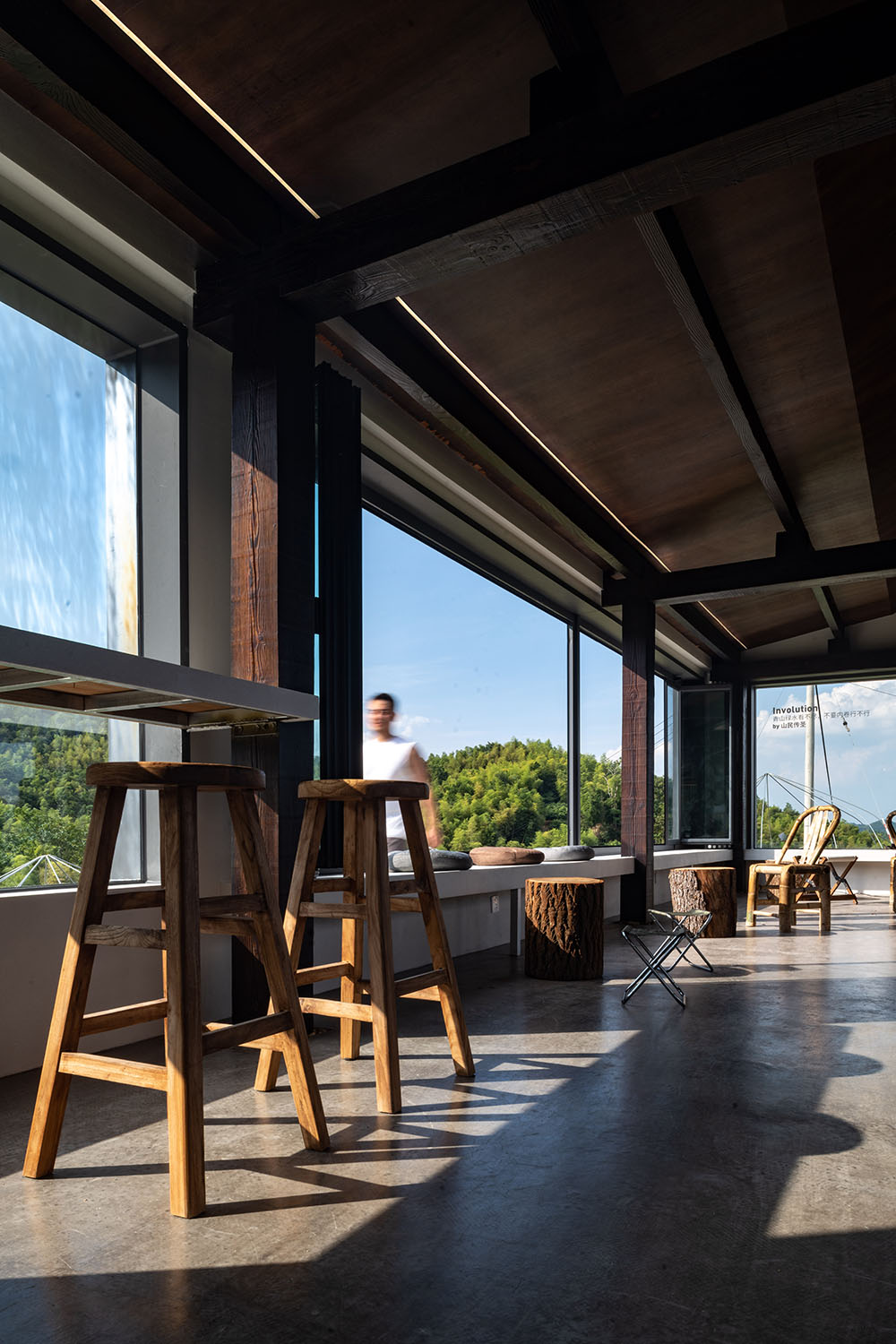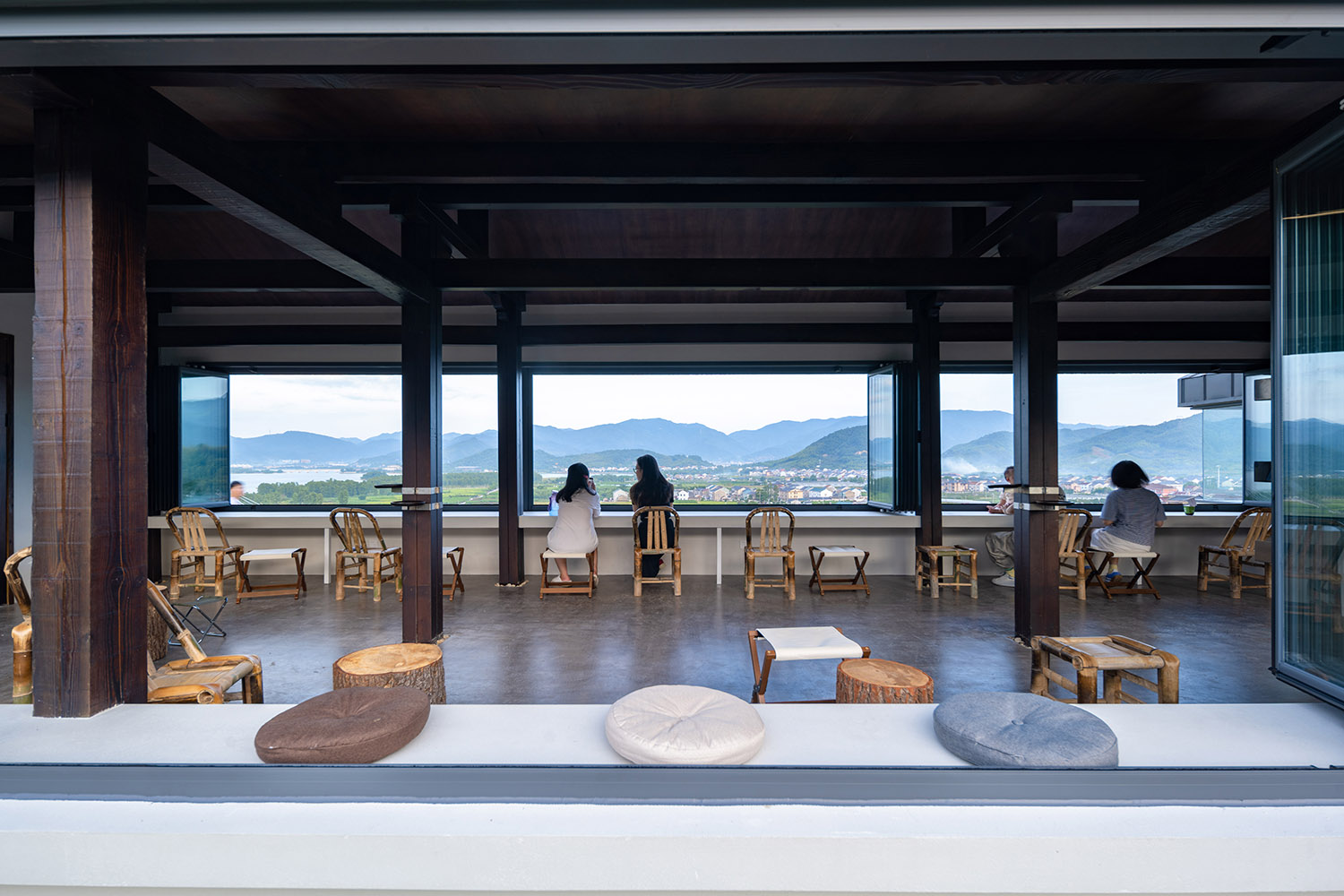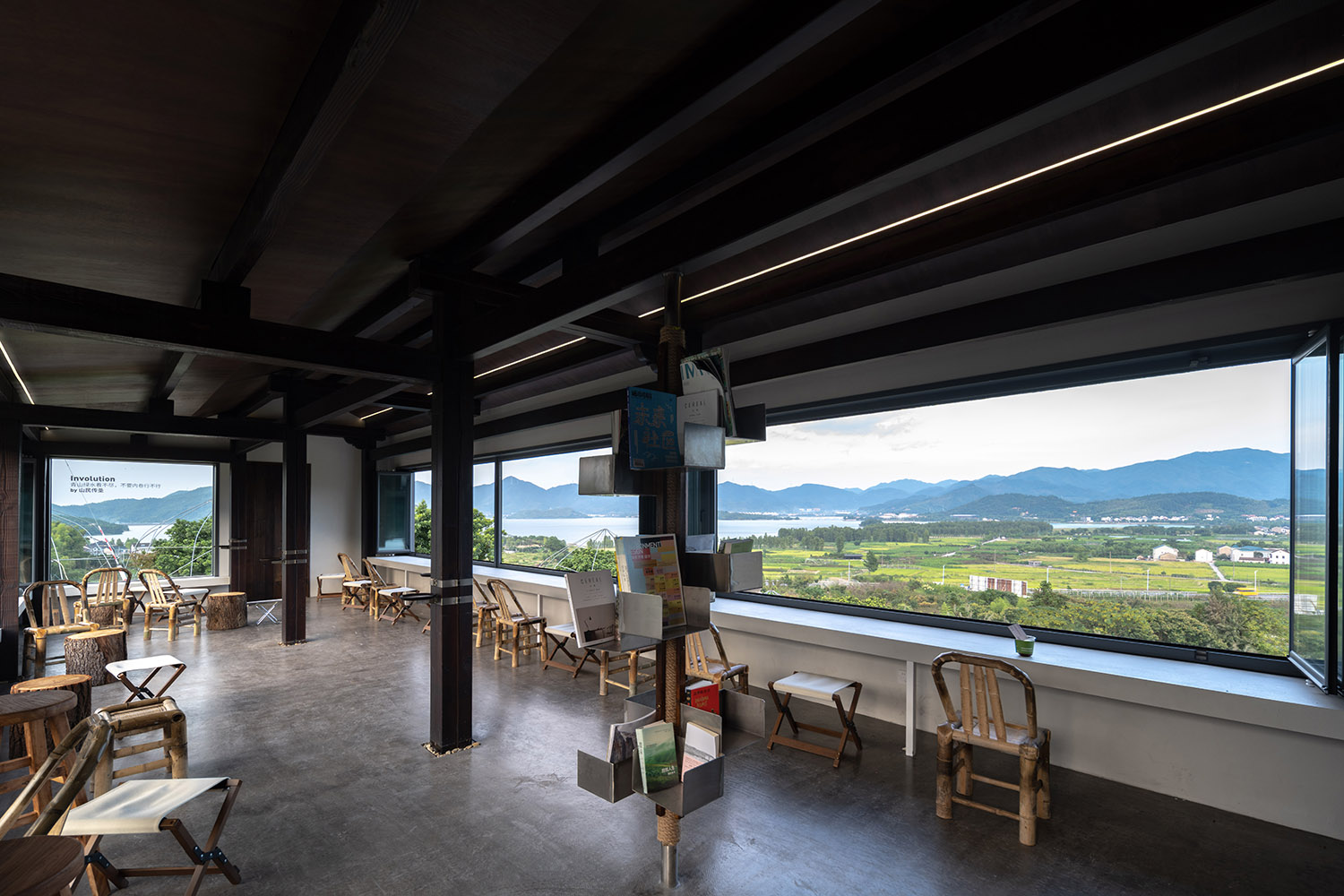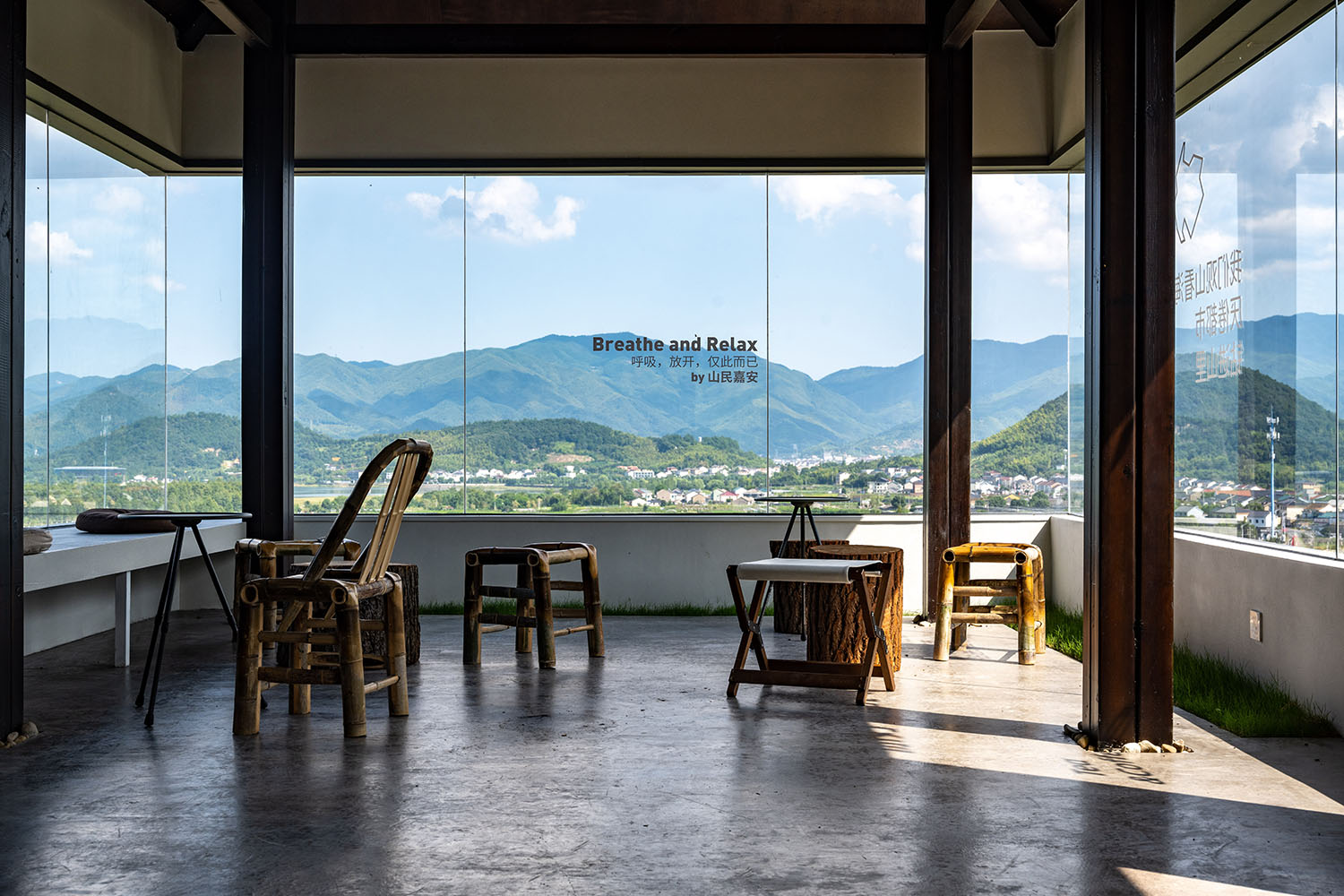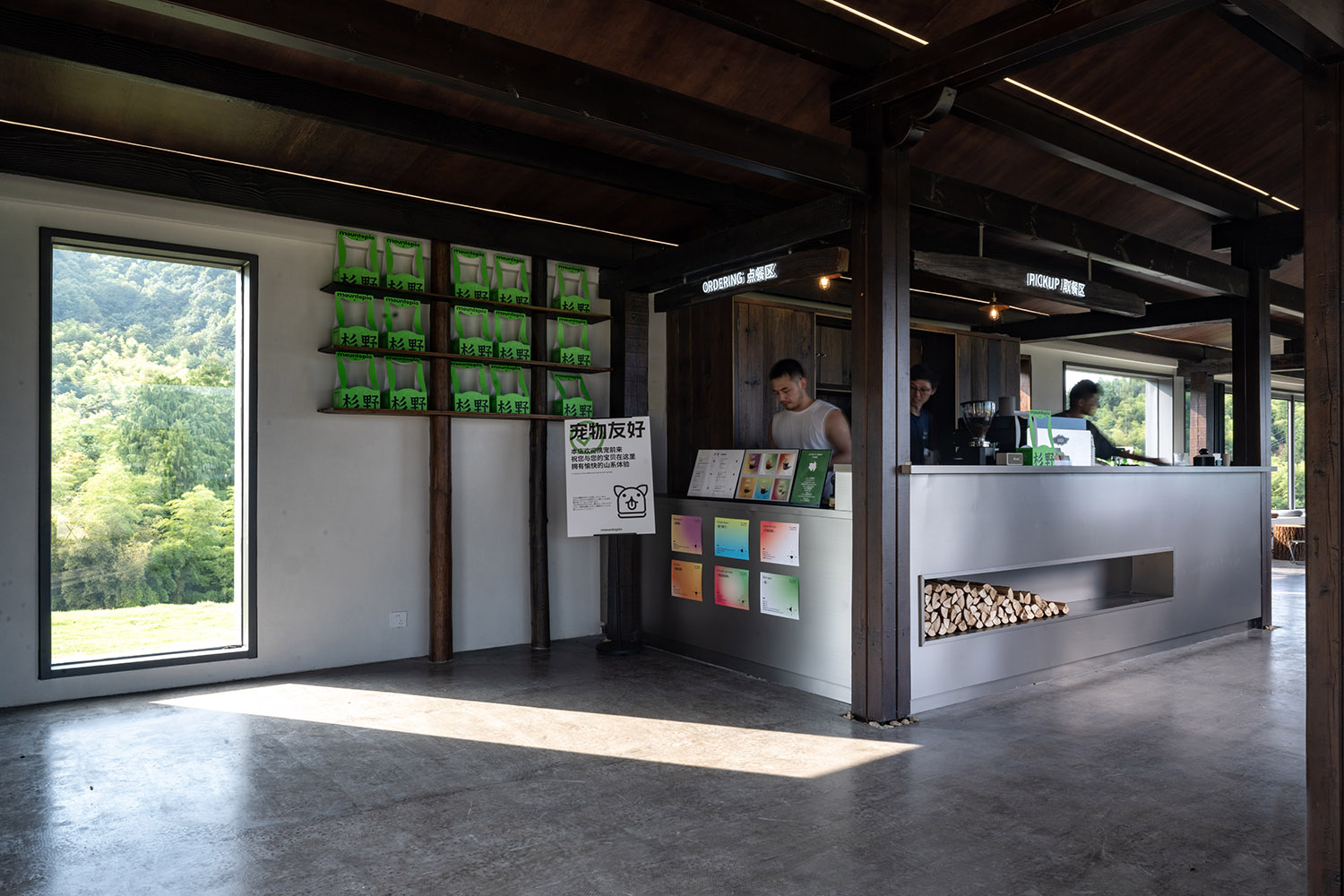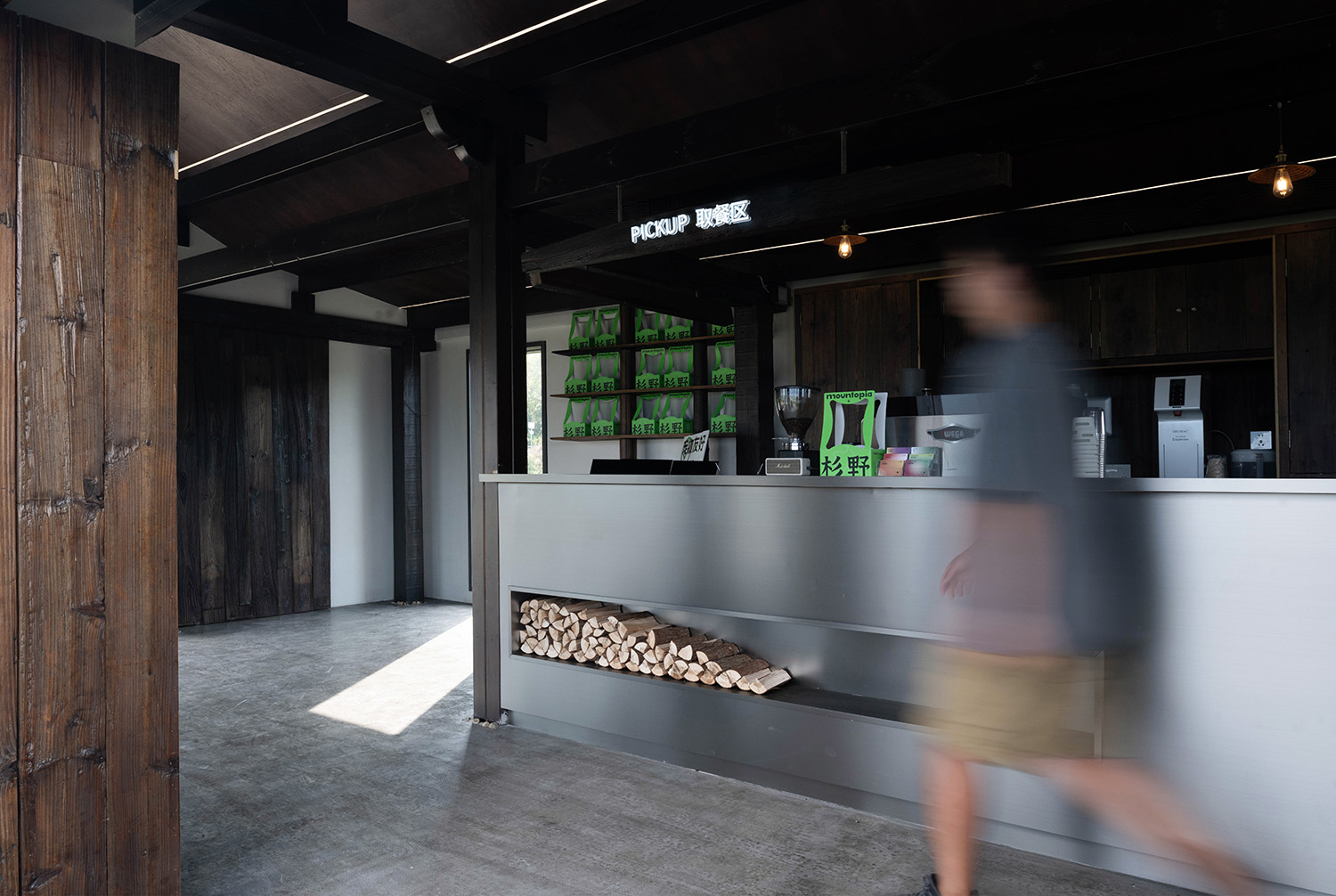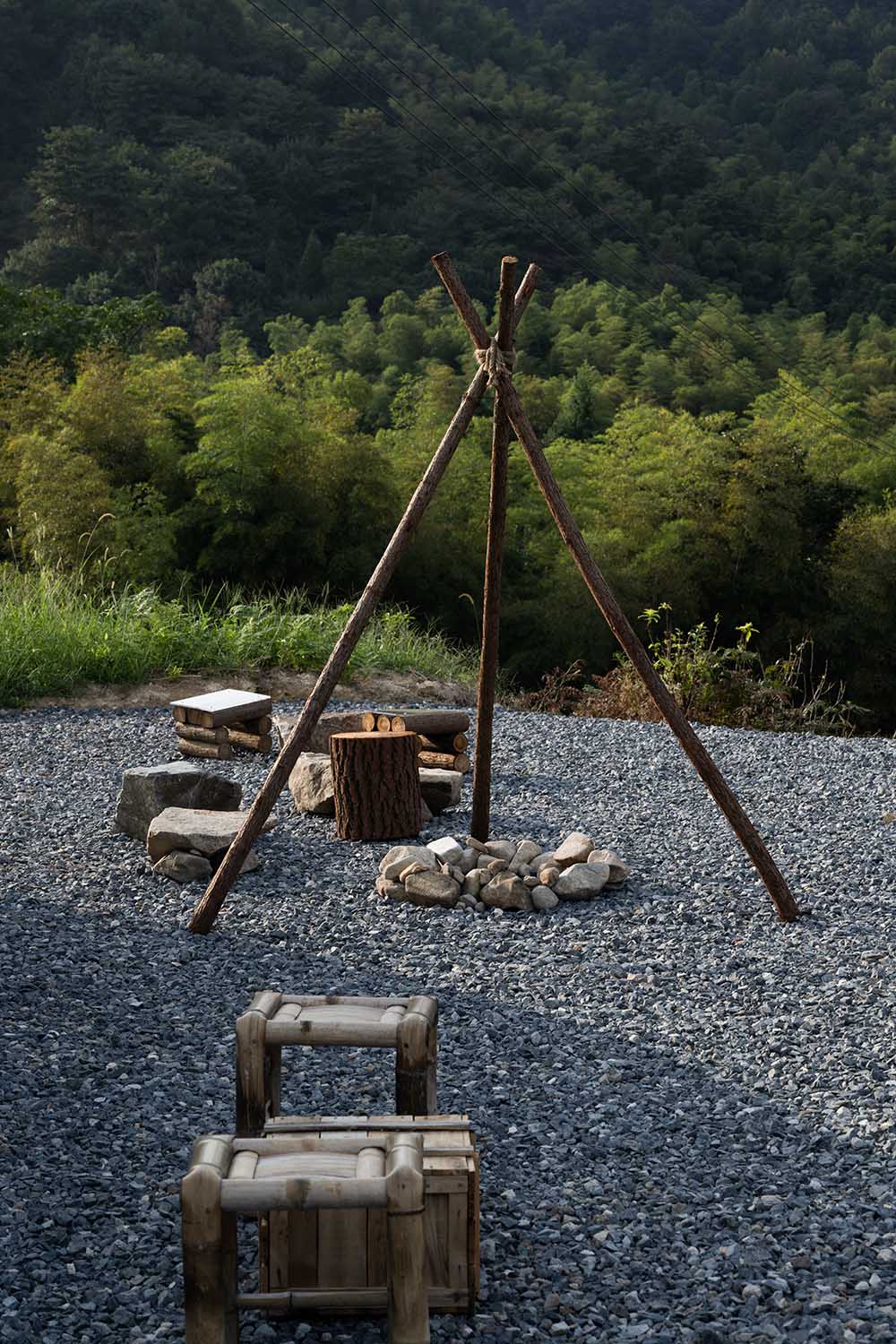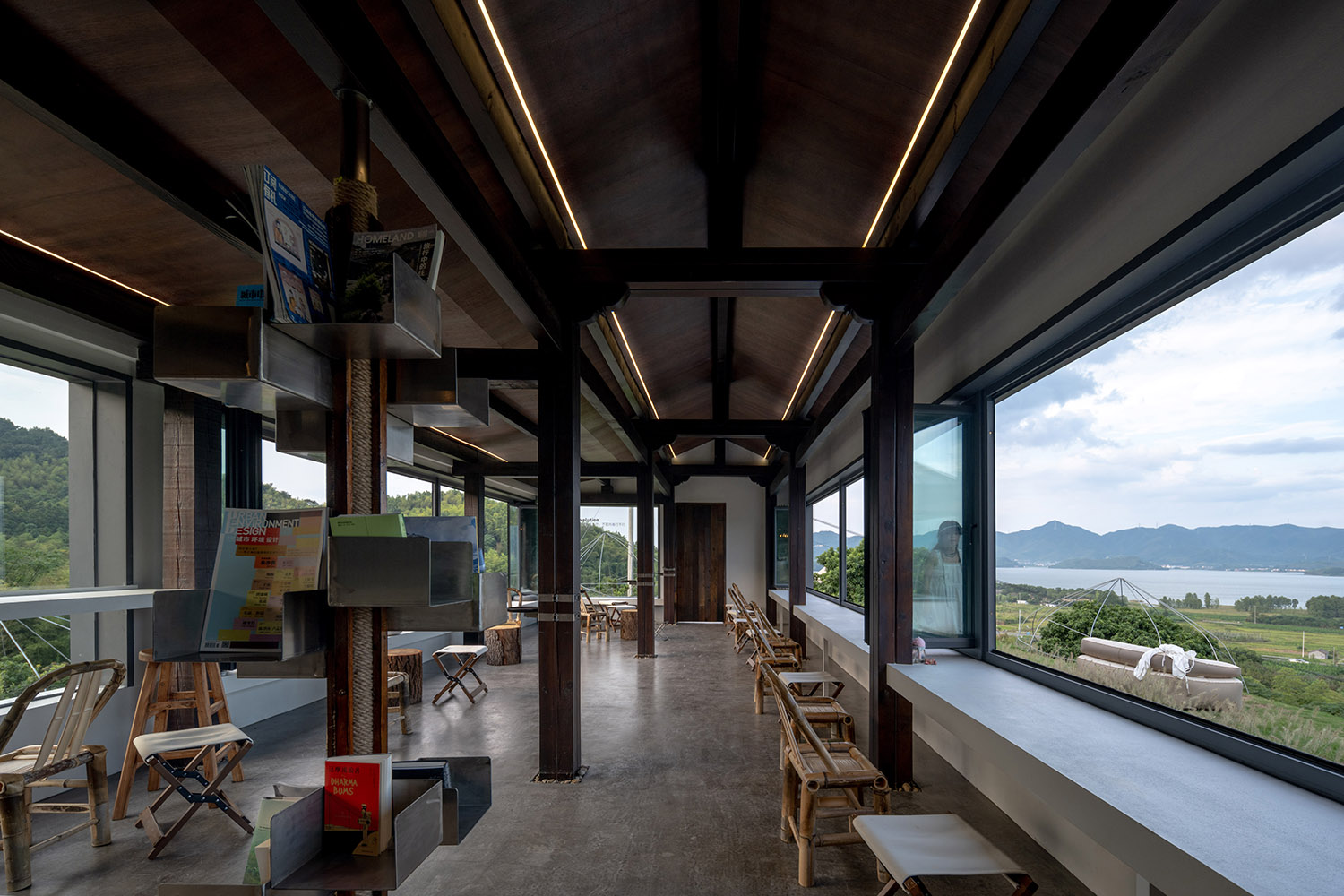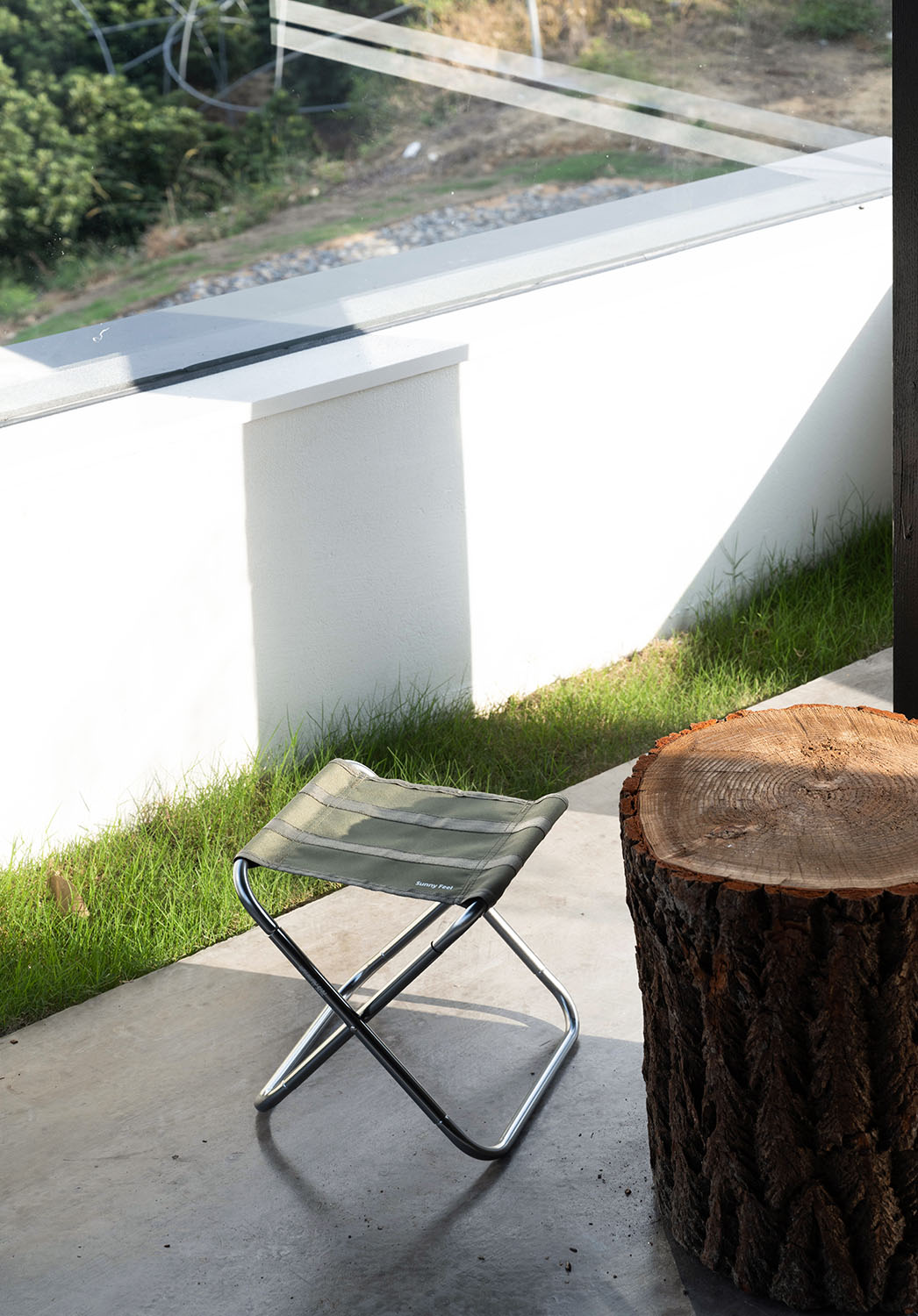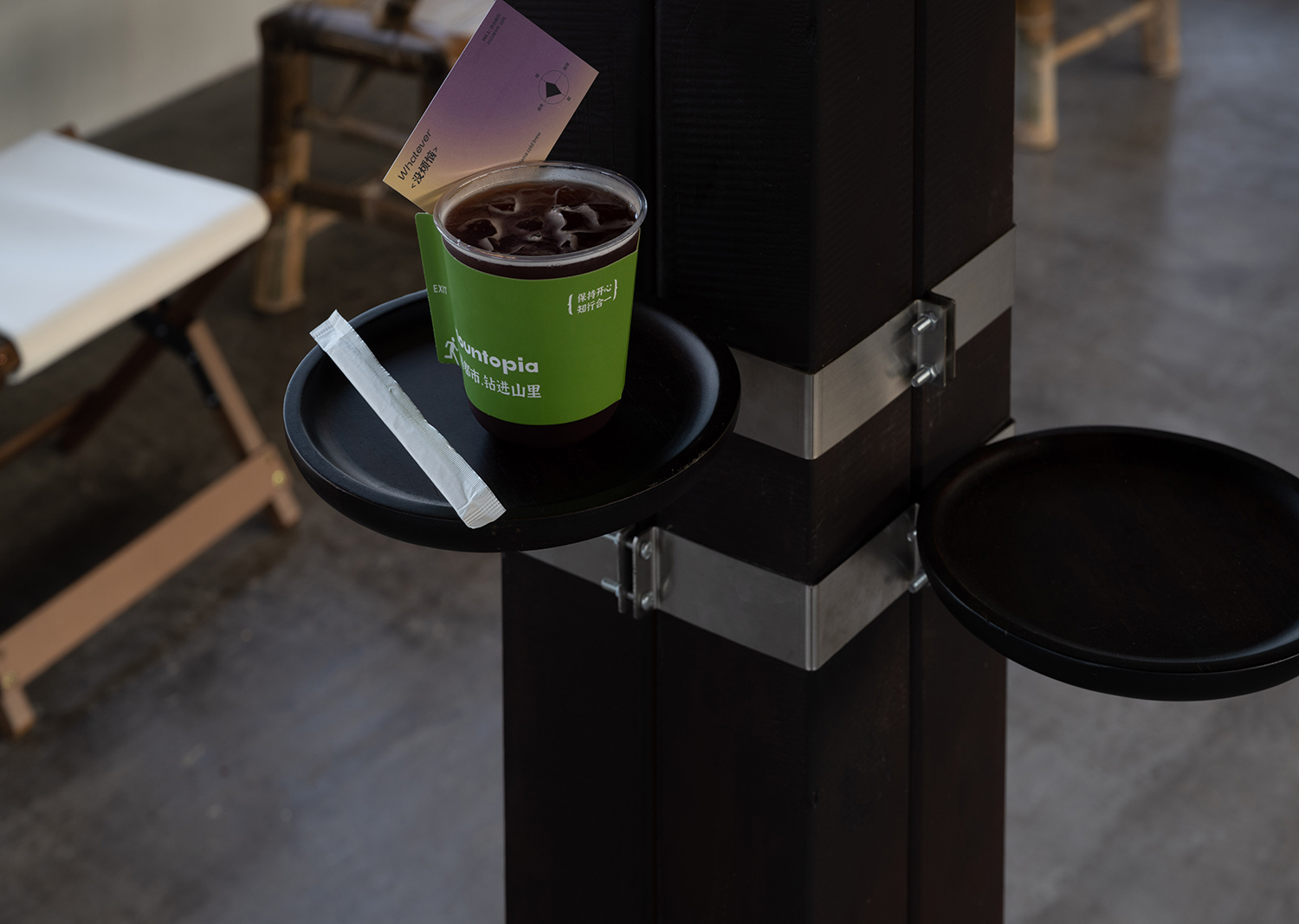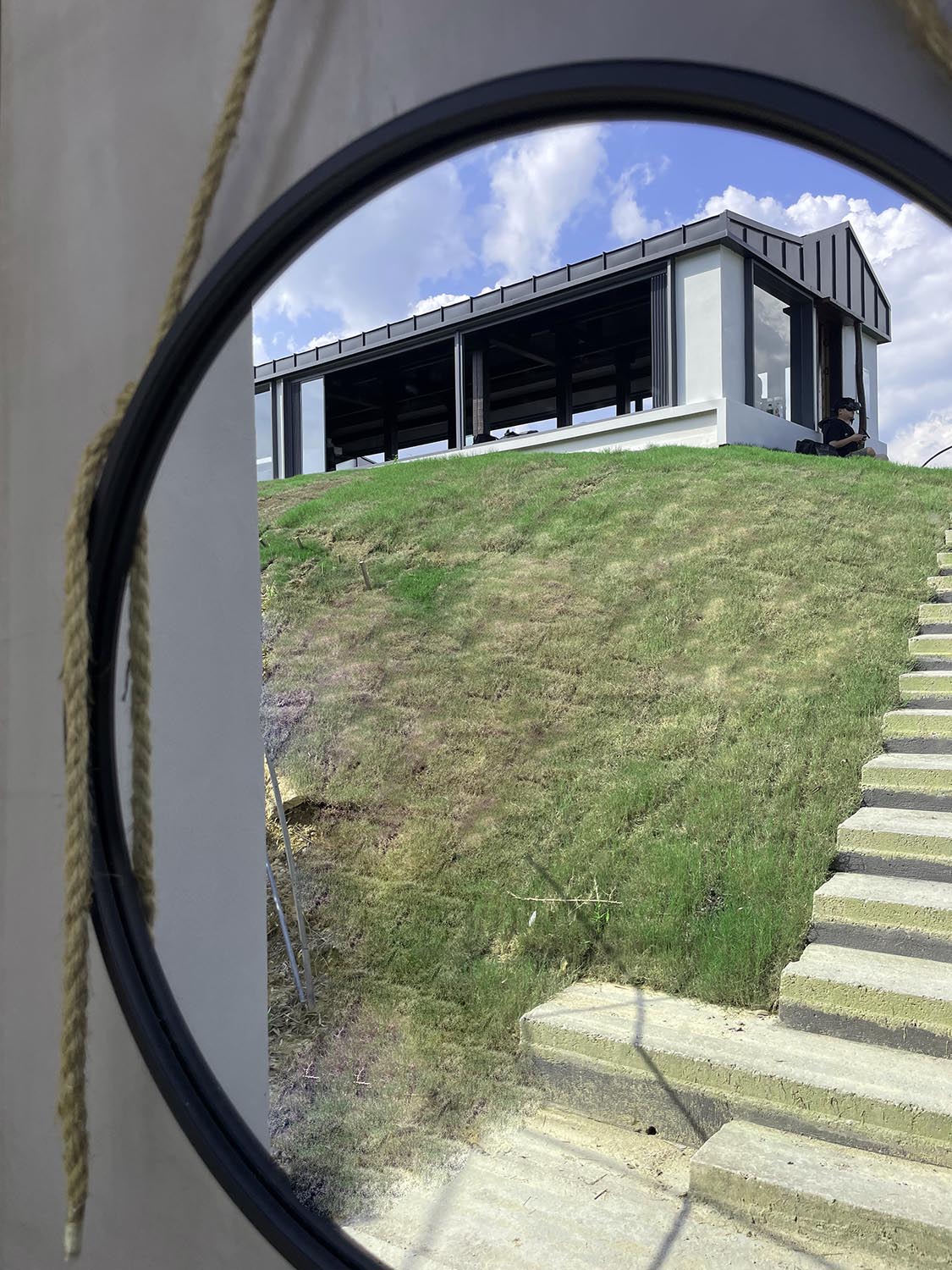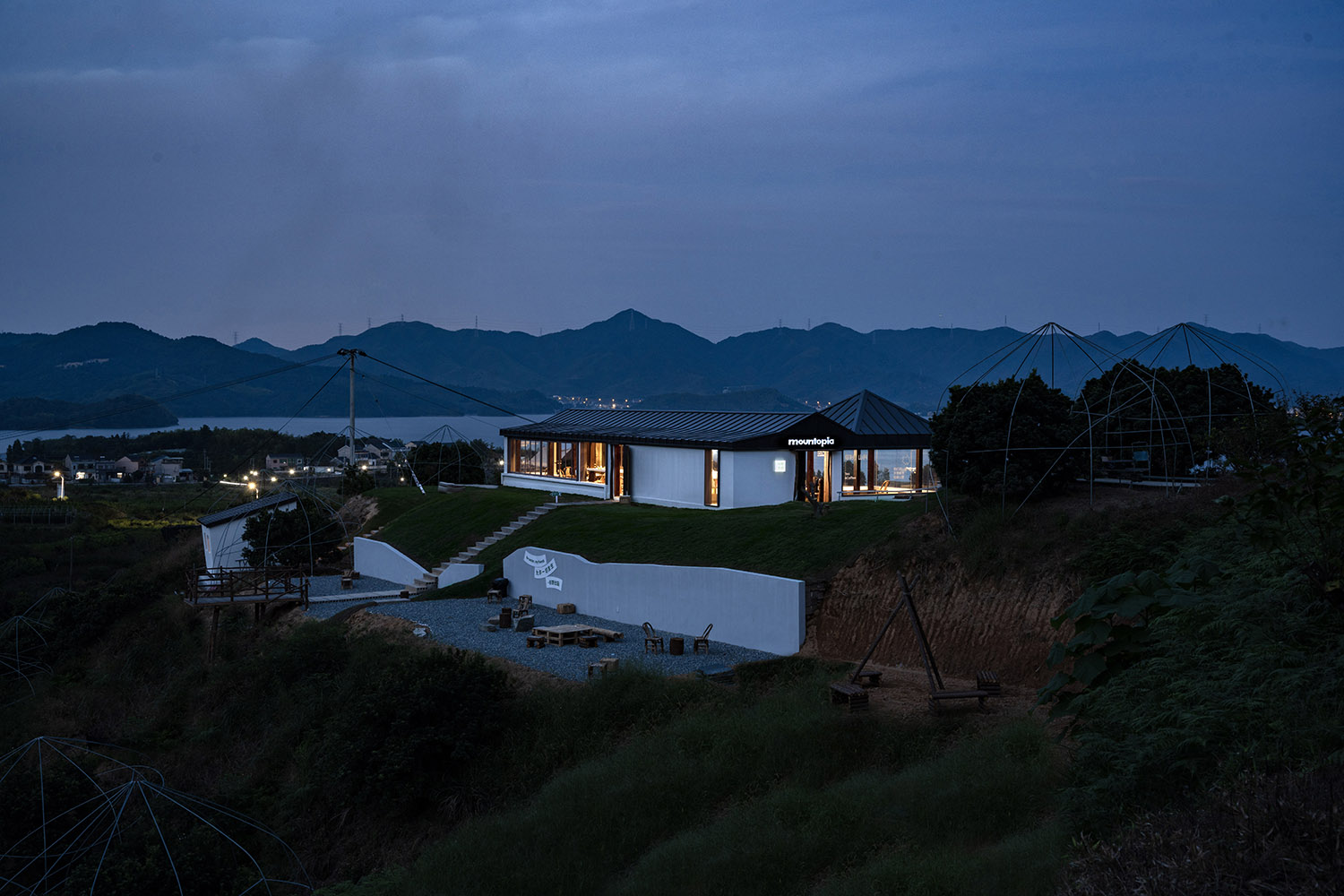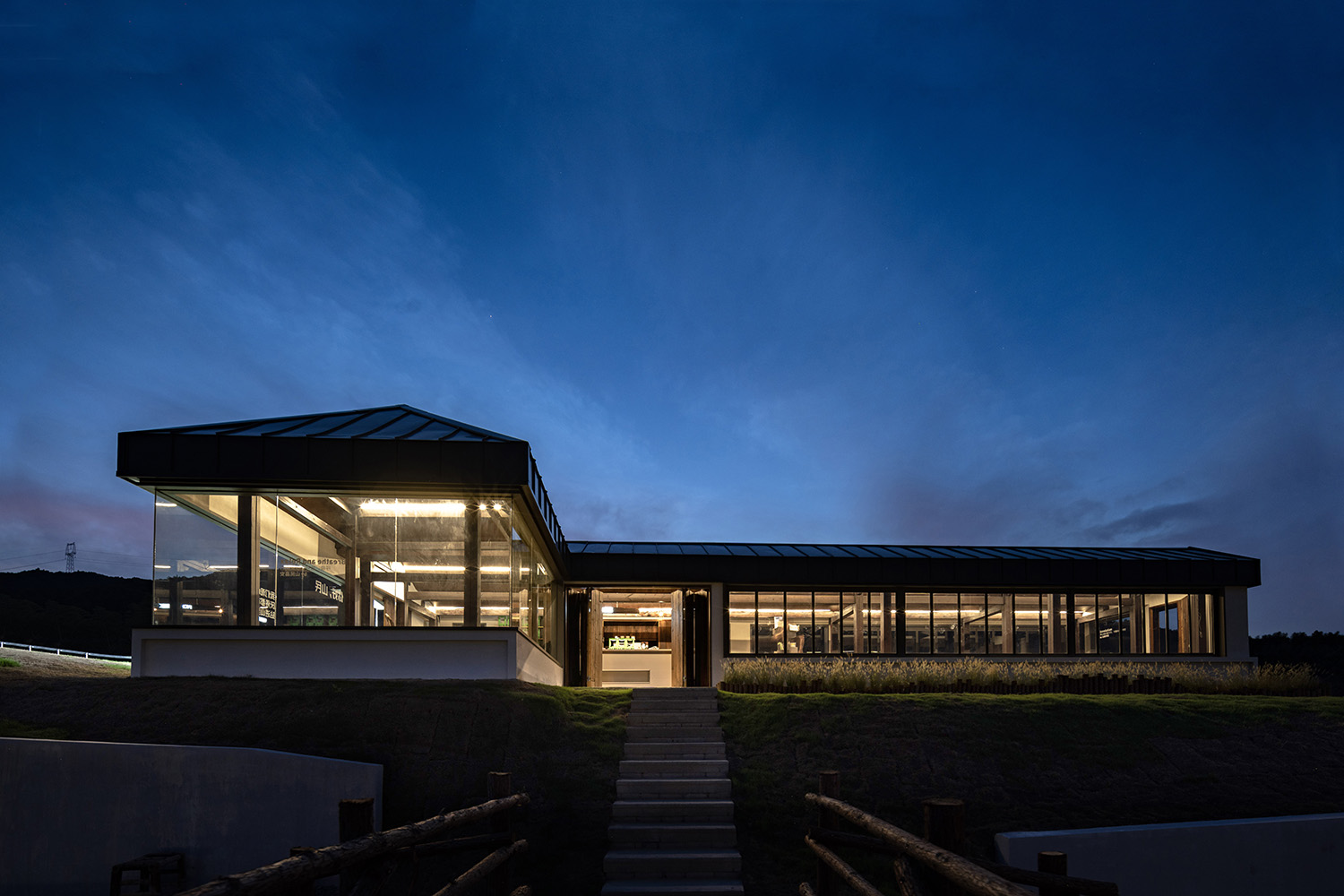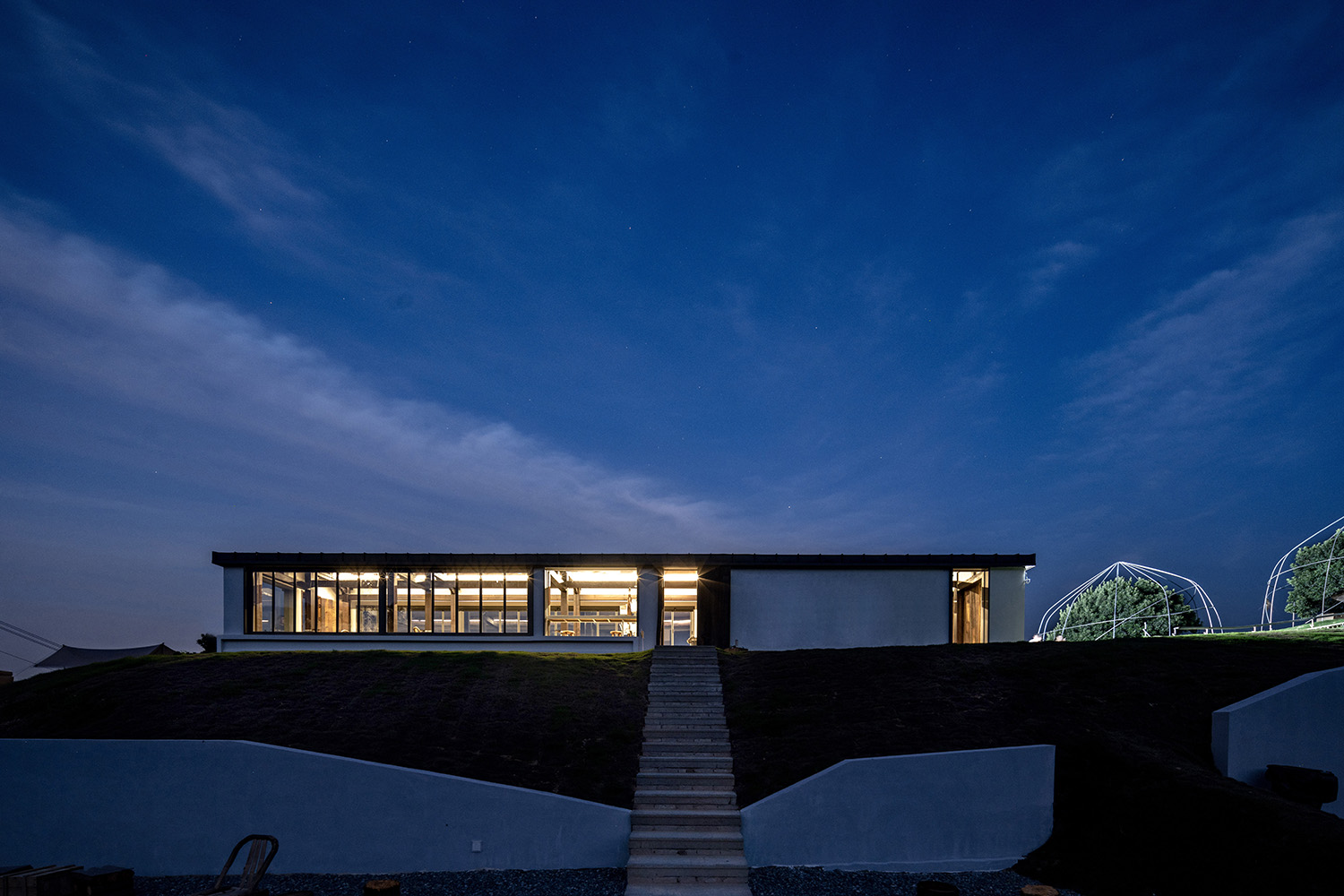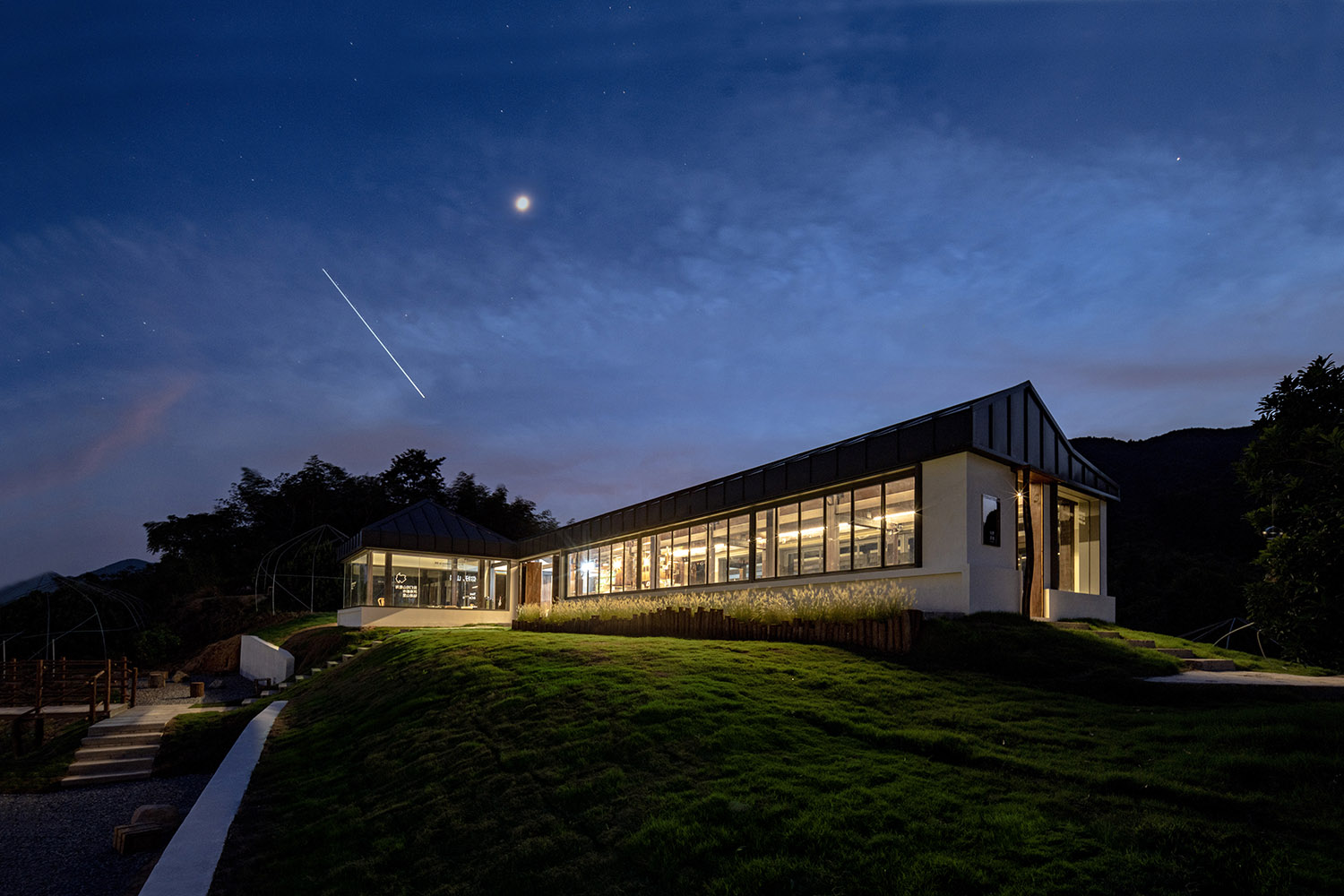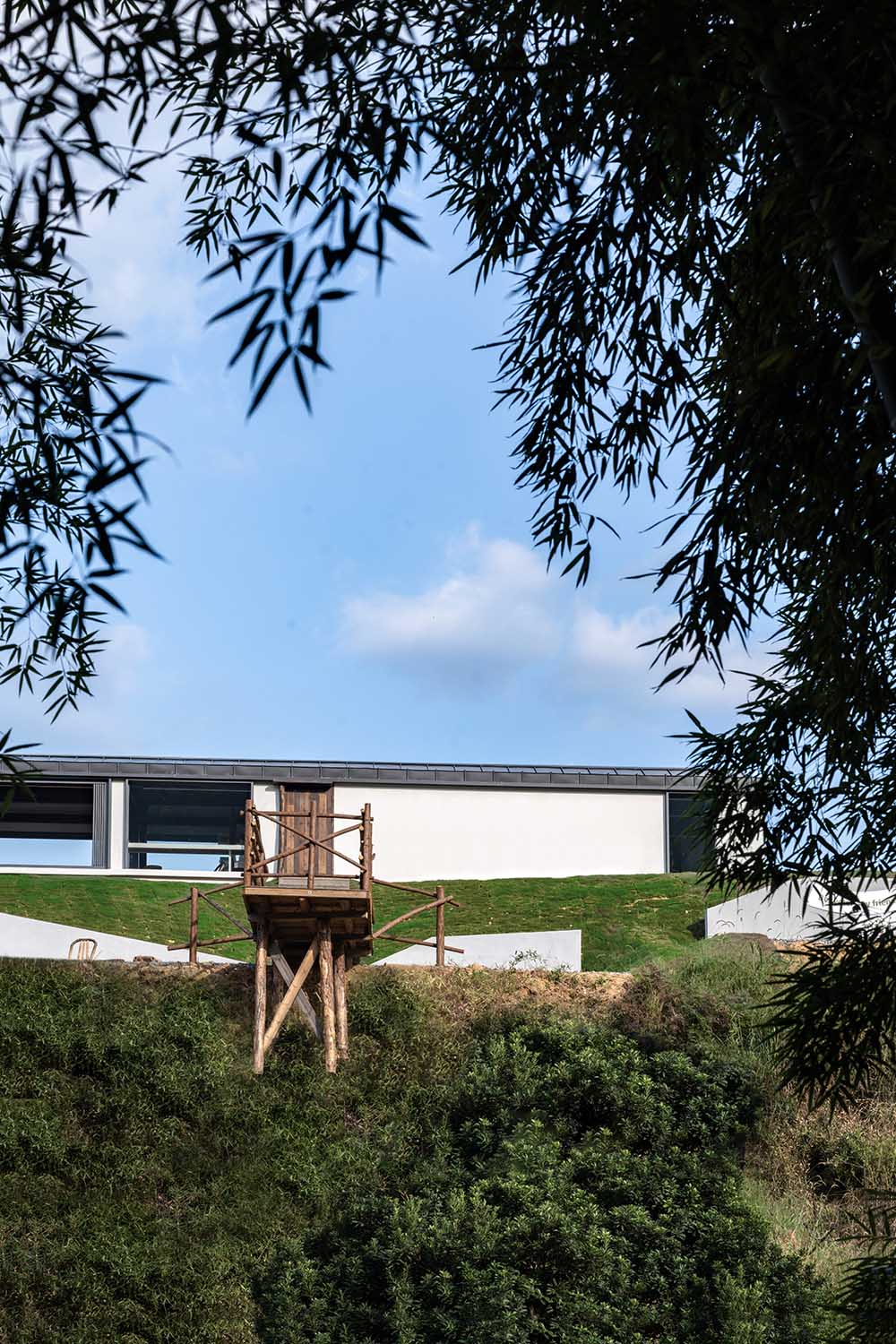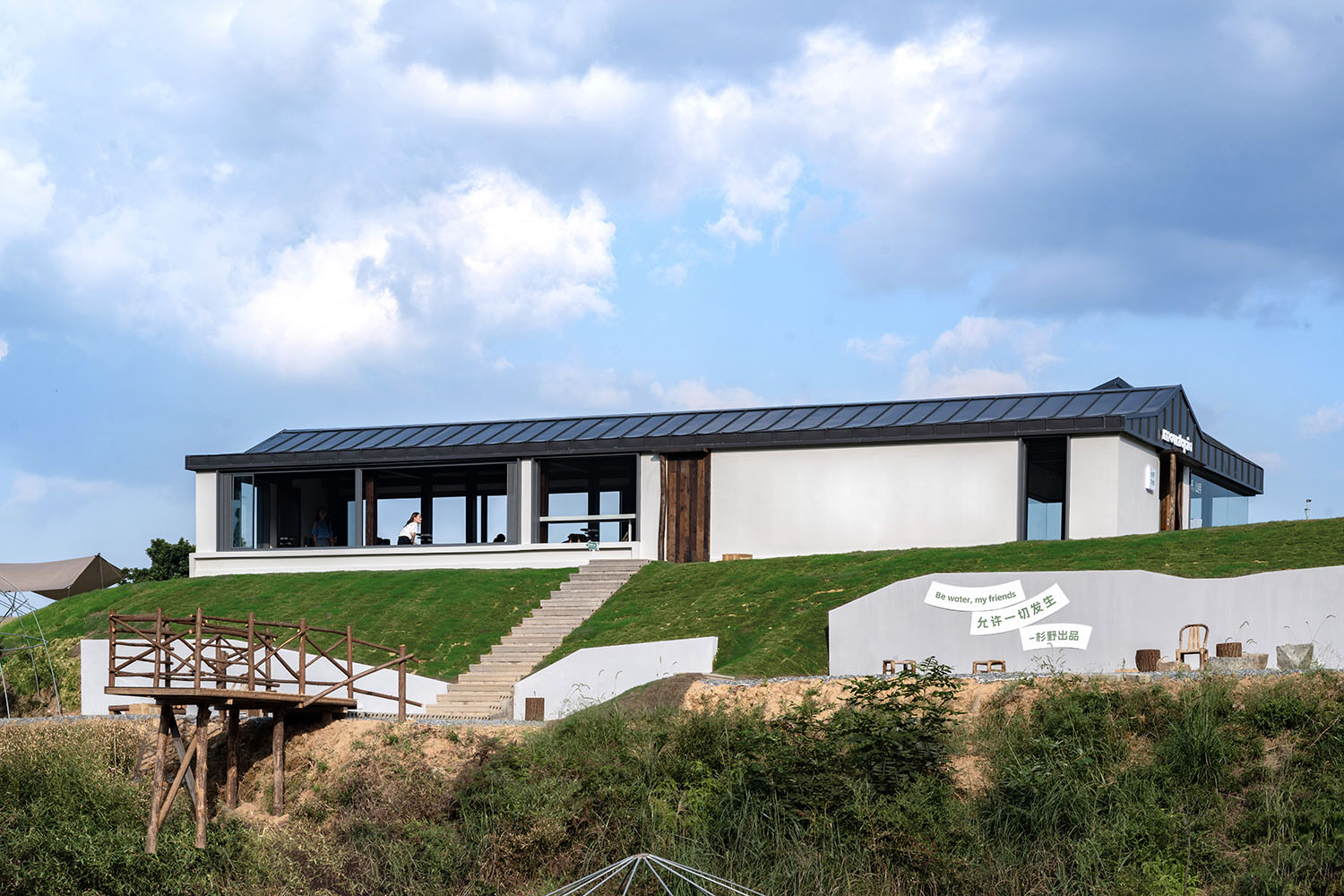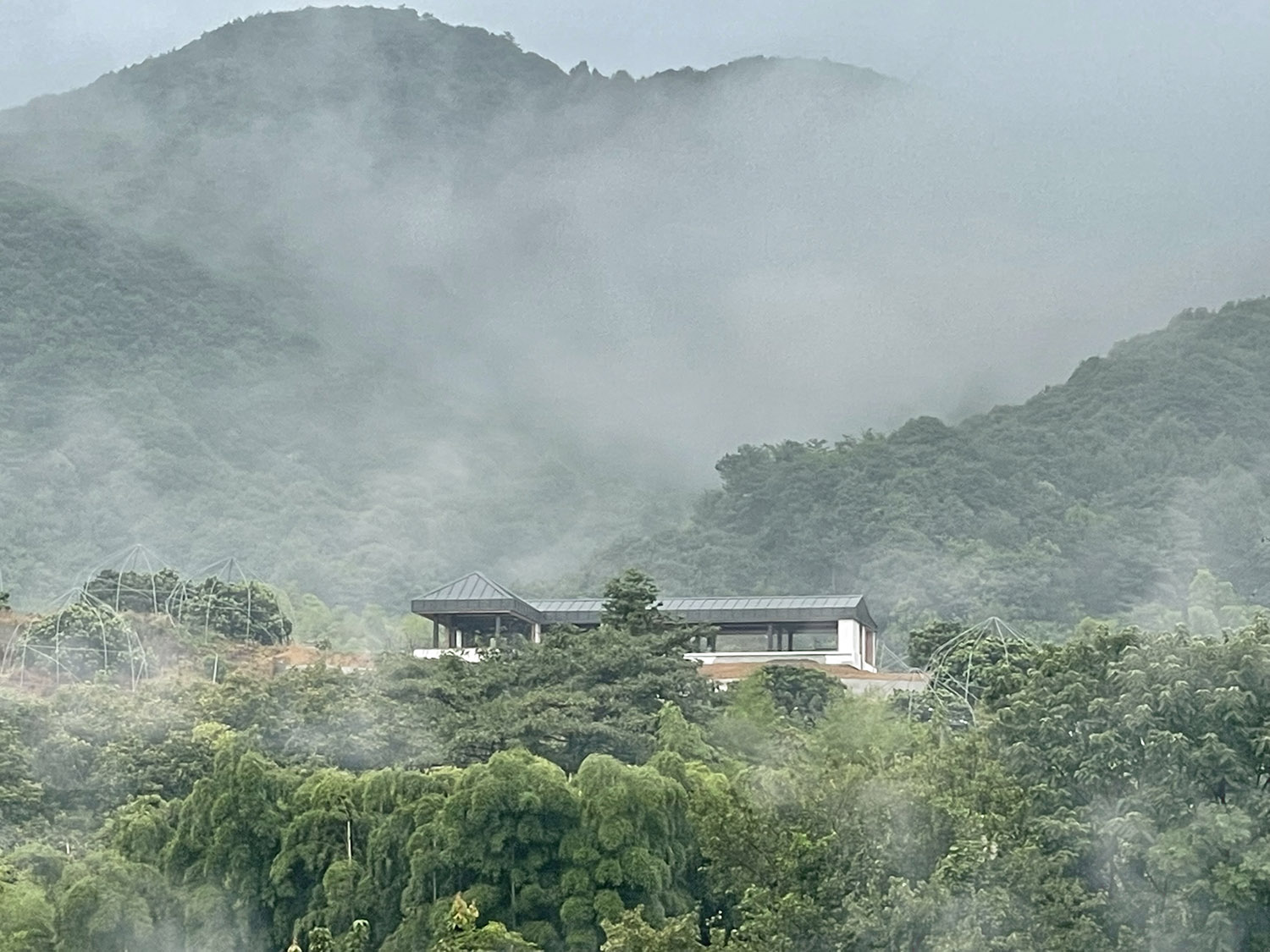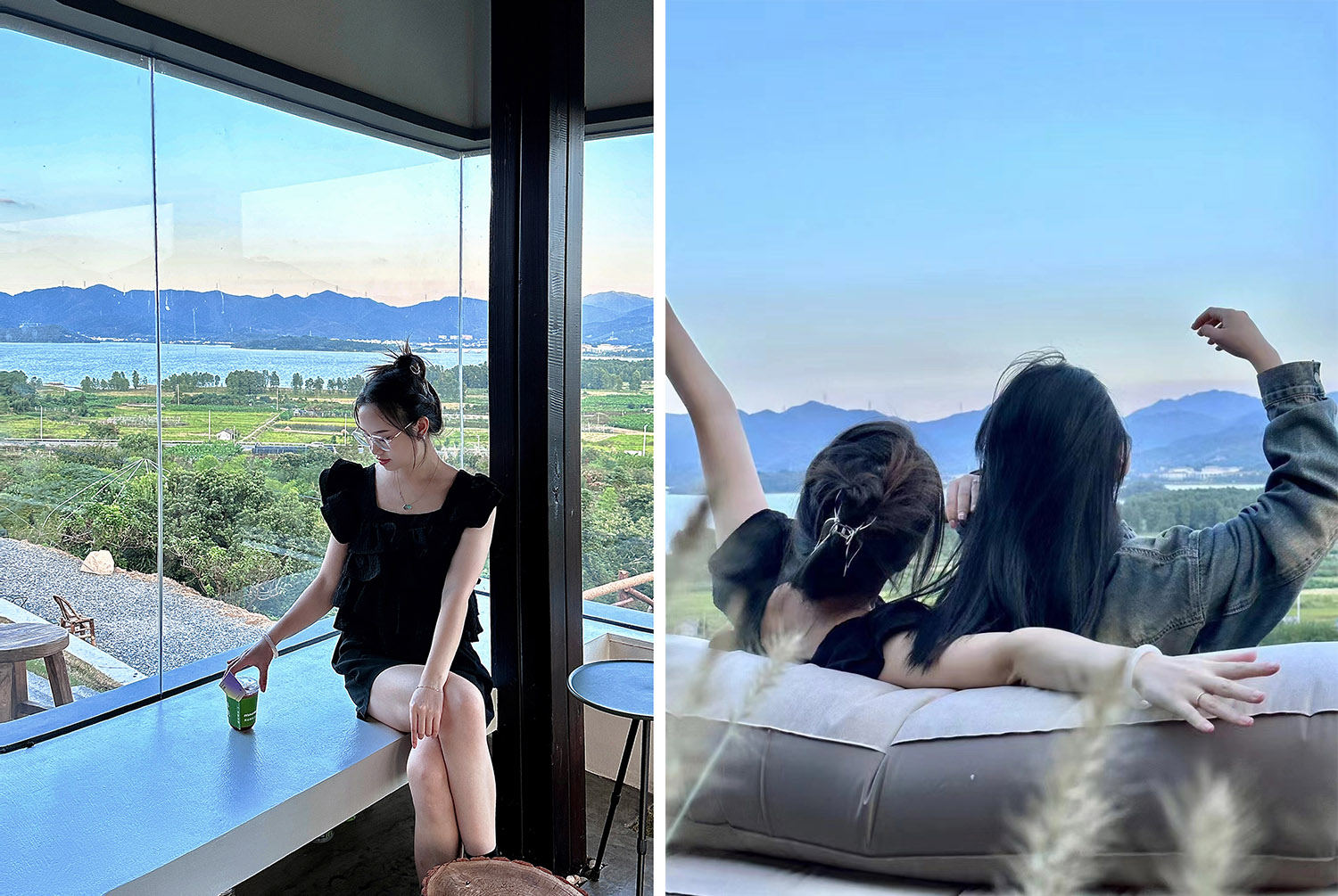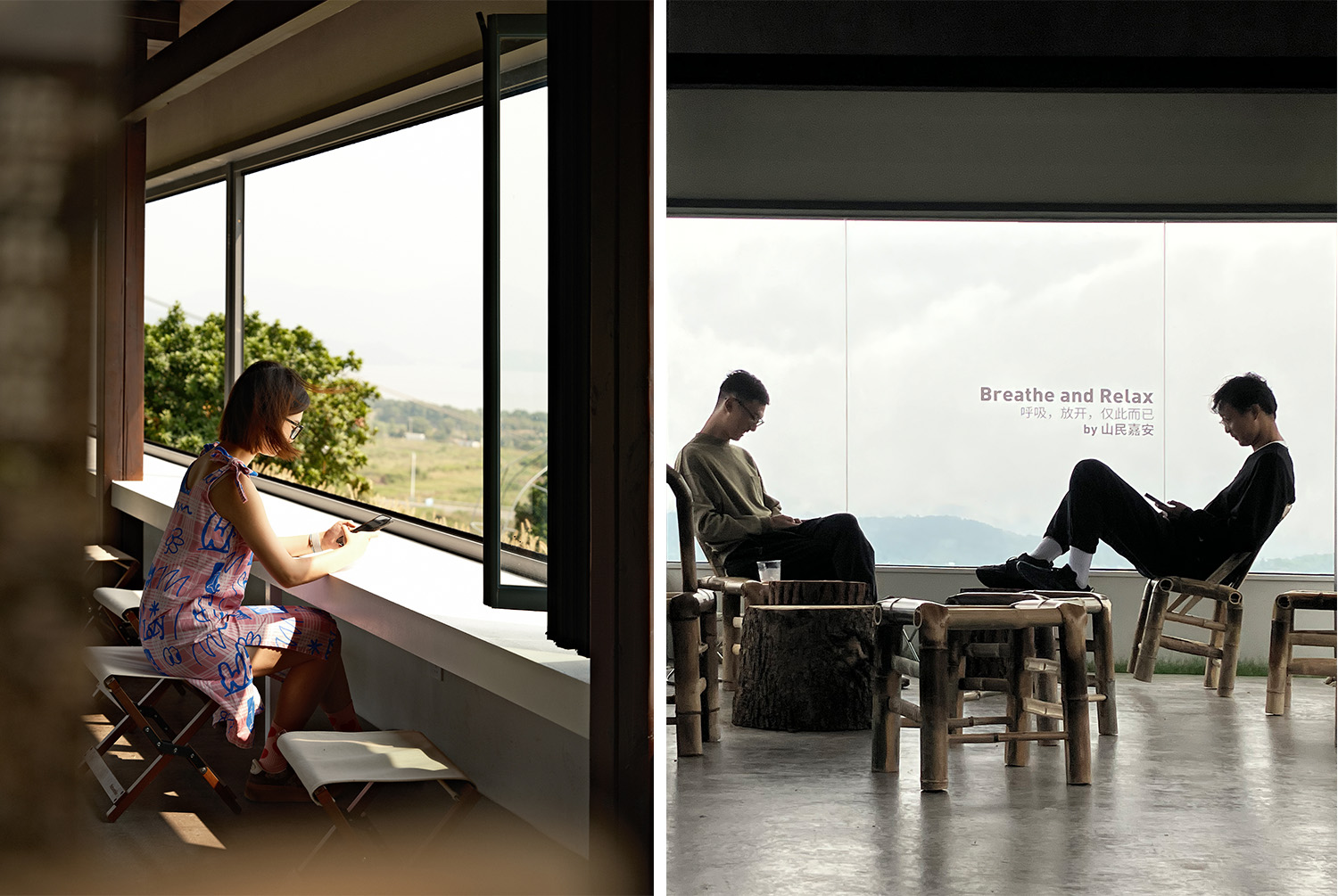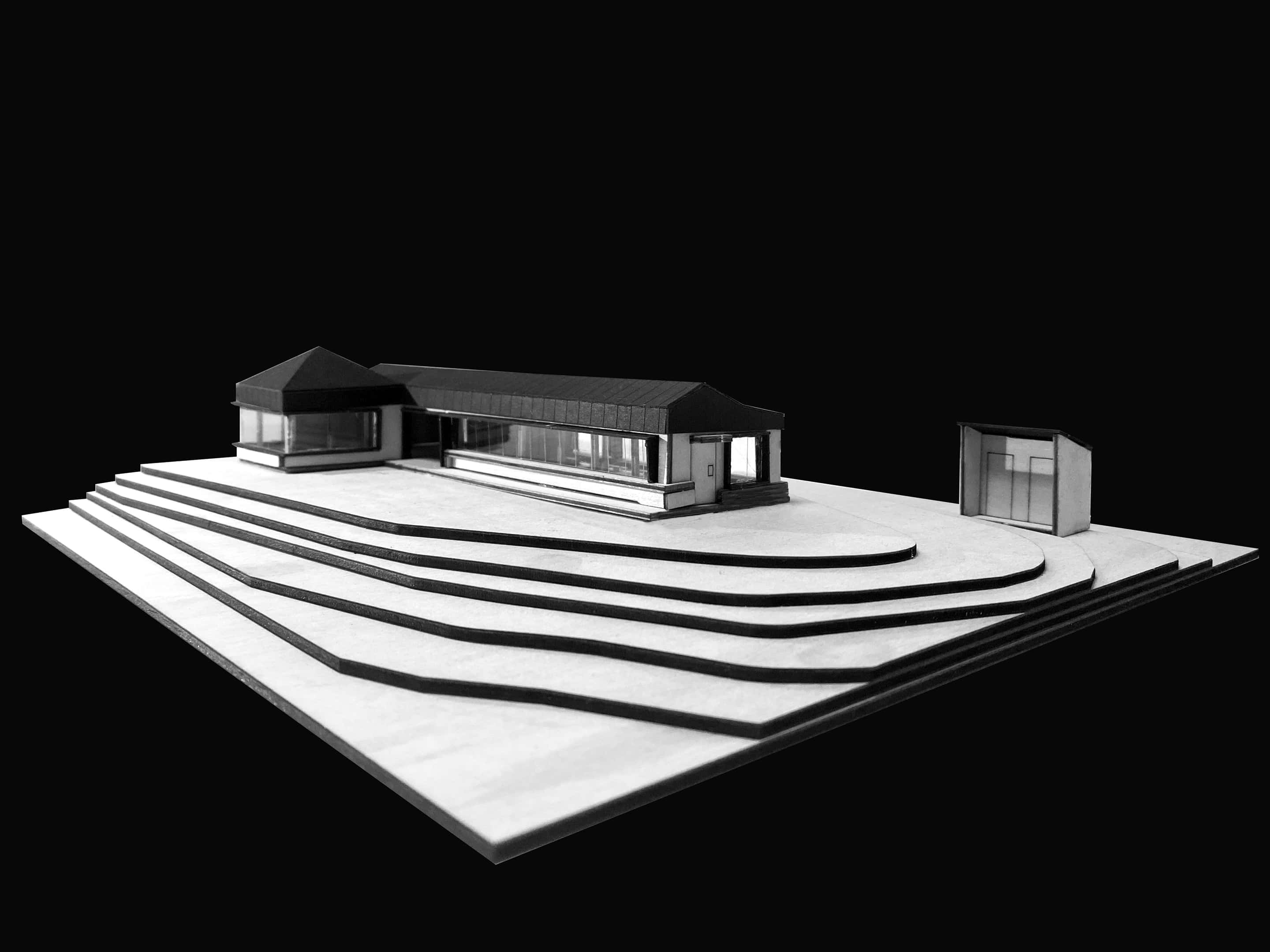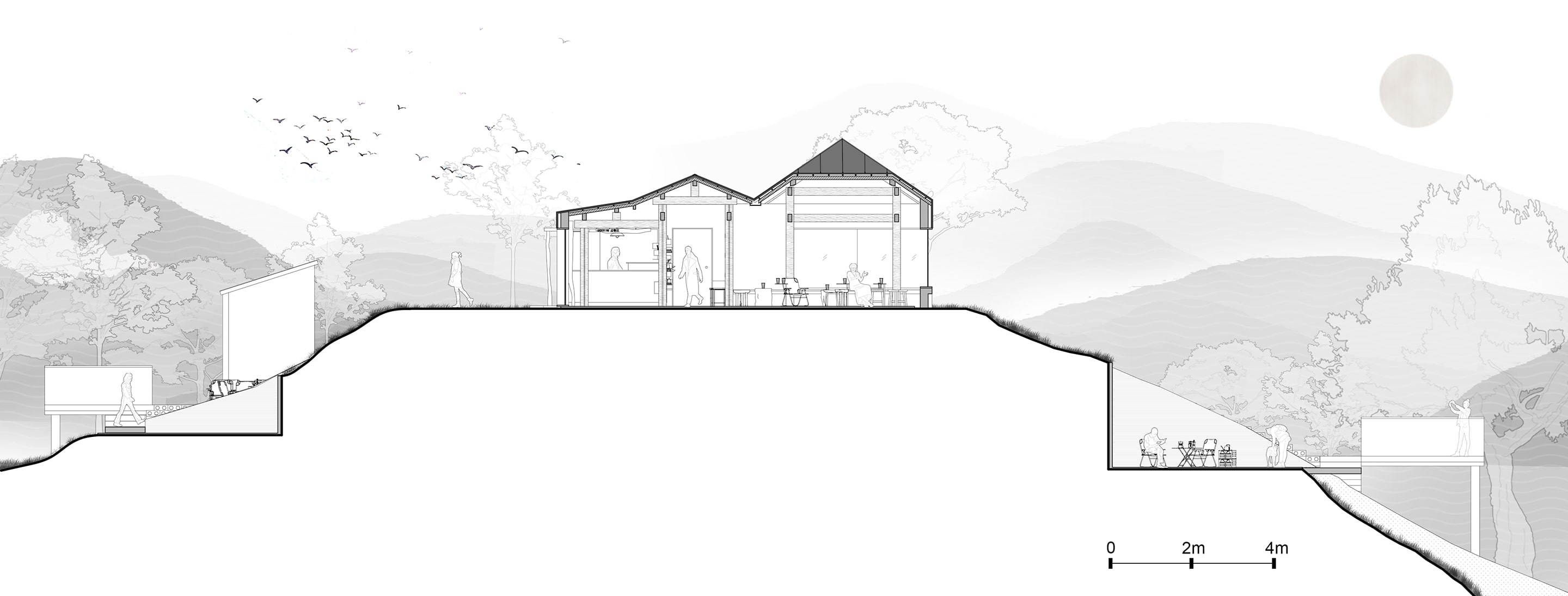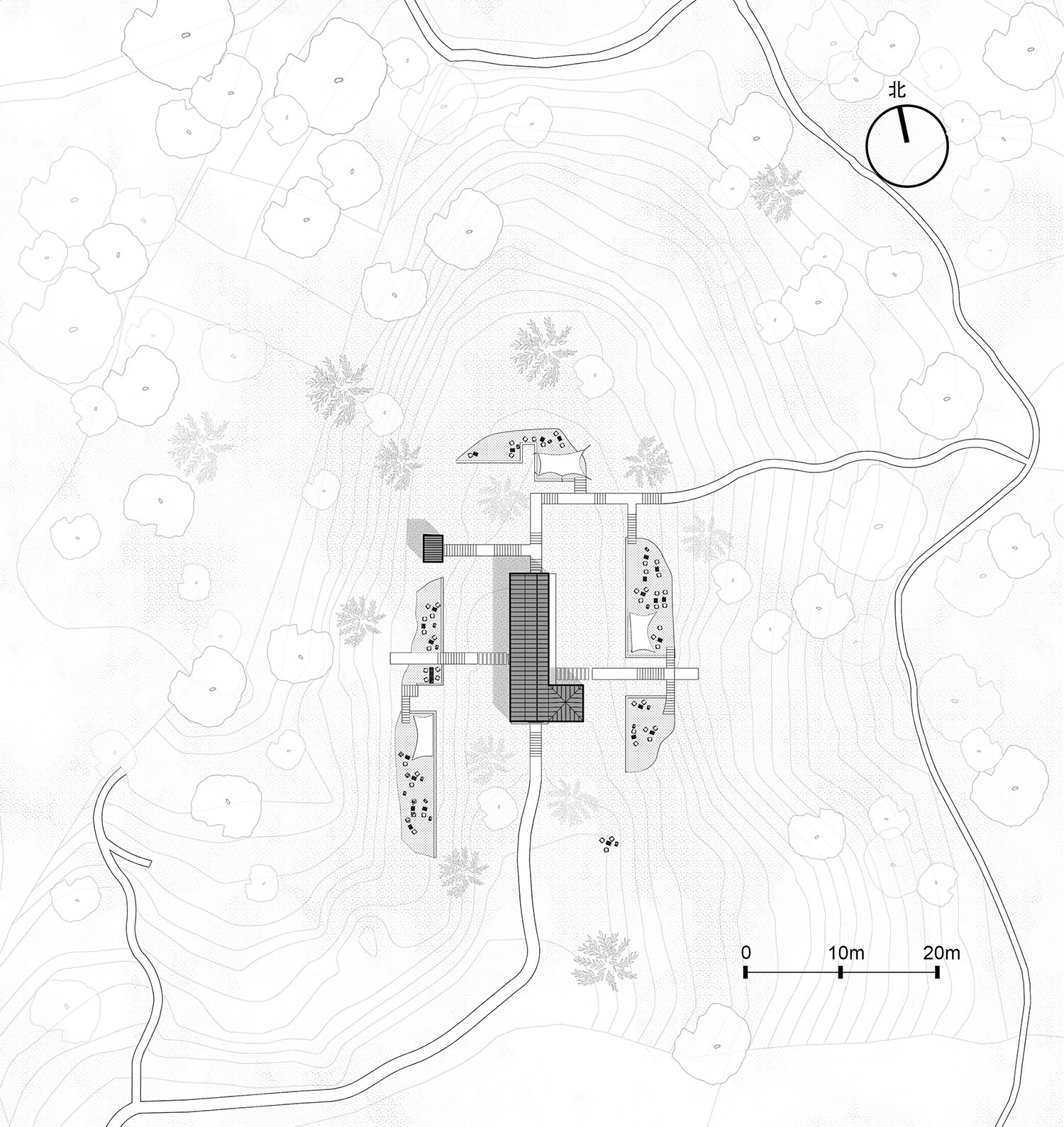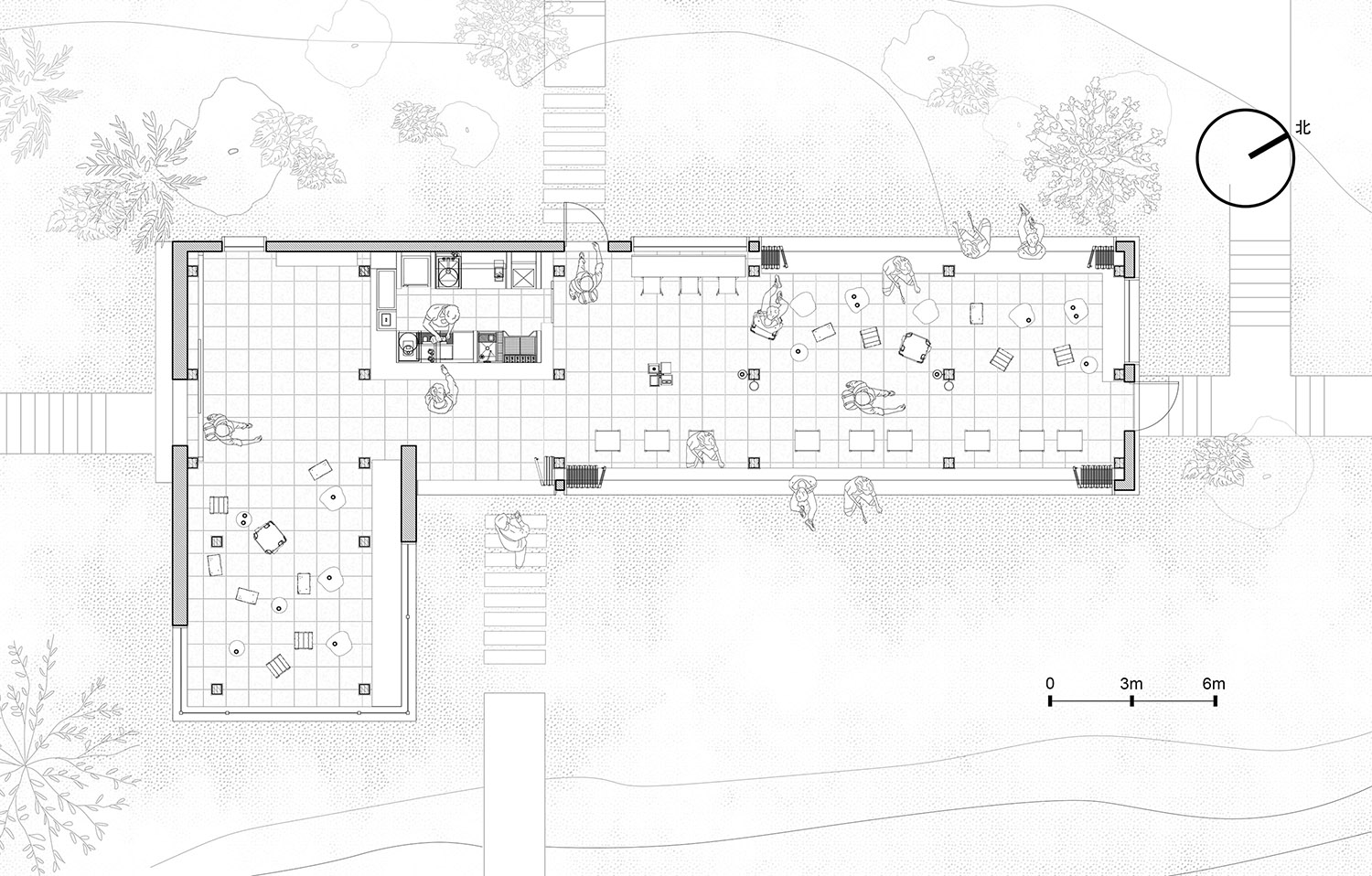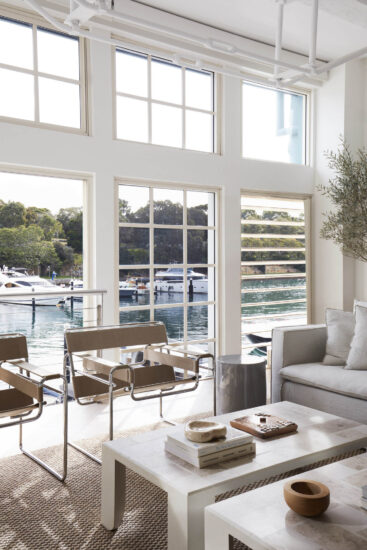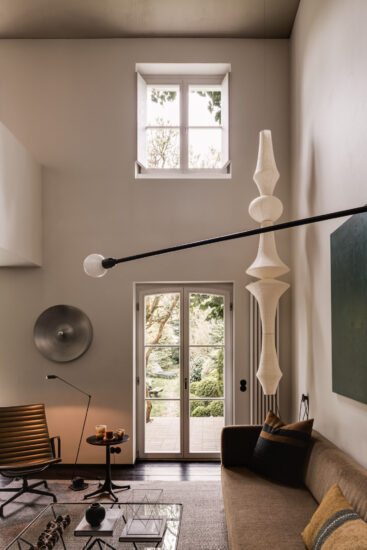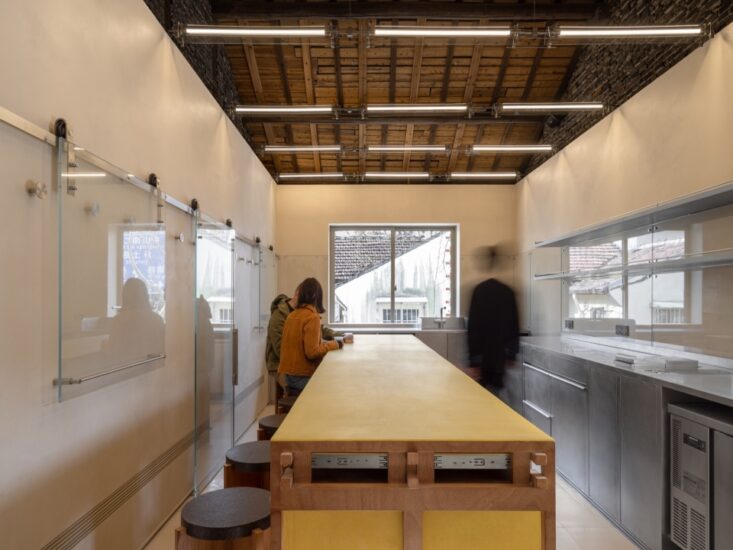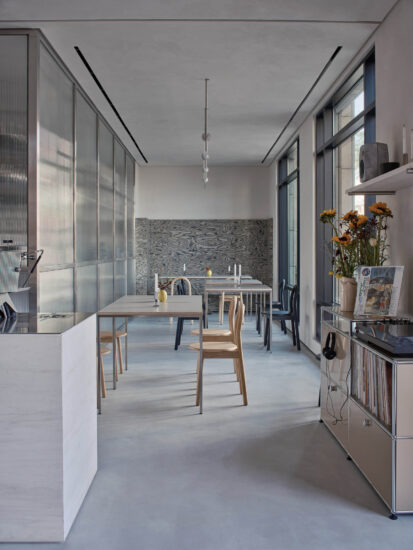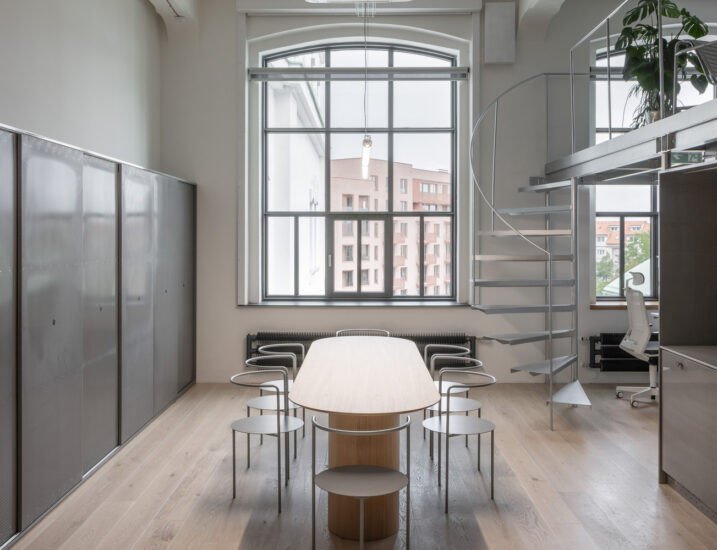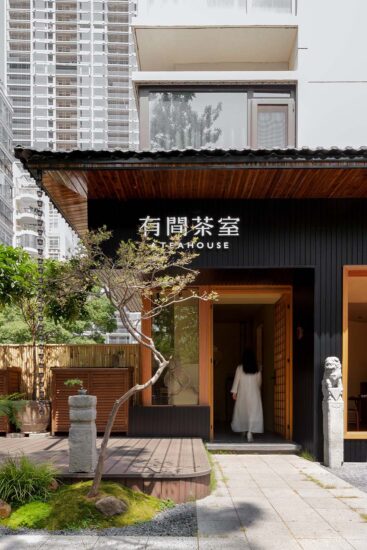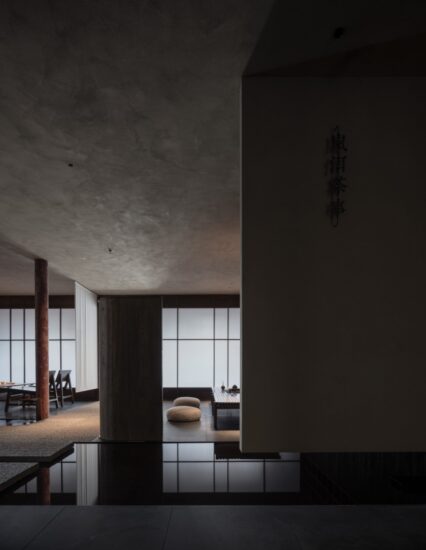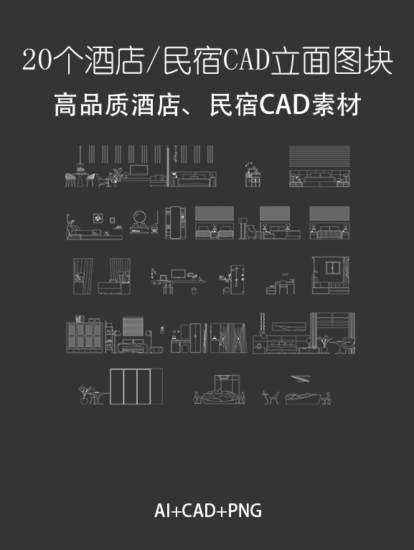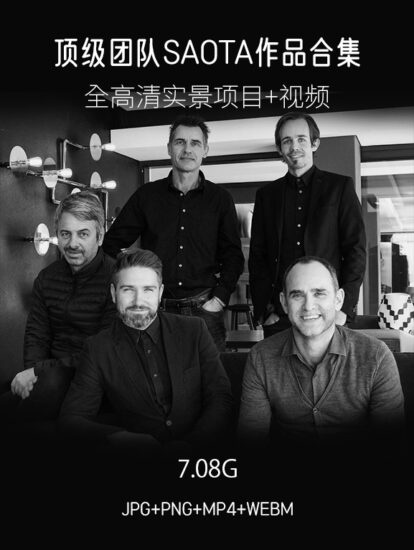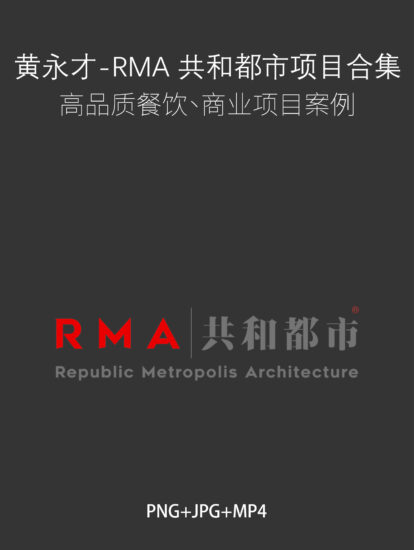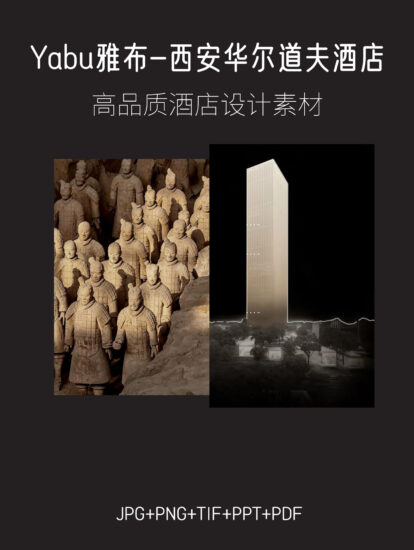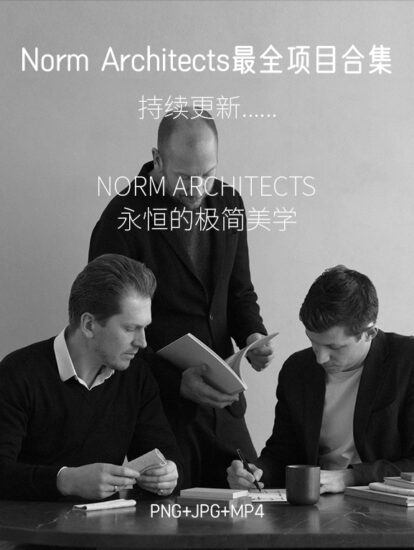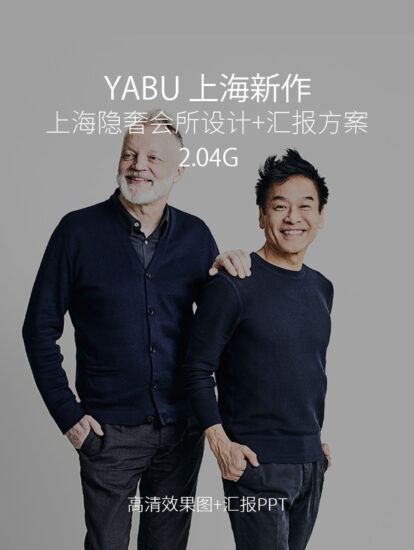四明山位於浙江省寧波市餘姚市四明山鎮,有龍虎山的氣勢壯觀,兔耳嶺的怪石靈秀,被譽為天然“氧吧”。杉野茶室坐落於山頂,作為基於原有茶山涼亭的建築改造項目。
Siming Mountain is located in Siming Mountain Town, Yuyao City, Ningbo, Zhejiang Province. It has the magnificent momentum of Longhu Mountain and the exquisite strange stones of Tuerling. It is known as a natural “oxygen bar”. Sanyo Tea House is located on the top of the mountain and is a building renovation project based on the original tea mountain pavilion.
∇ 鳥瞰圖,Bird’s-eye view © 徐英達
∇ 總平麵圖,Master plan © 徐英達
場地記憶,Site memory
首次到現場是一個四月陰雨天,從山下往山上走的路上我想到的是陶淵明在桃花源記中描述的場景“初極狹,才通人。複行數十步,豁然開朗”。
The first time I arrived at the scene was on a rainy day in April. As I walked up the road from the foot of the mountain, I thought of the scene described by Tao Yuanming in his work ‘Peach Blossom Spring’: ‘At first, the path was narrow and only allowed one person to pass through. After walking a few dozen steps, it suddenly opened up’.
既有建築是由一個木構架的廊道和亭子組成的休憩配套建築,且兩個構築不是同一時間建造的。場地麵朝四明湖,背靠環山竹林,東側和北側的竹林給人很強的包裹感。在這樣自然資源極為豐富的空間,我們和業主都認為該項目應建立與自然長期的鏈接,重新喚醒使用者對於自然的感知。基於對現場的空間感知,我們提出了兩個重要的設計要點作為設計的切入點:微介入和觀景。
The existing building is a recreational supporting structure consisting of a wooden corridor and pavilion, and the two structures were not built at the same time. The site faces the Siming Lake and is backed by a bamboo forest on the surrounding mountains. The bamboo forests on the east and north sides give a strong sense of enclosure. In such a space with abundant natural resources, both we and the client believe that the project should establish a long-term connection with nature and reawaken users’ perception of nature. Based on the spatial perception of the site, we propose two important design points as the starting point of the design: micro-intervention and landscape viewing.
意誌載體, Spirit carrier
⼭是⼀座廚房,⼭腳、⼭⾥、樹林間都有⻝材和⼯具。循環⾃⼭林的柴⽕需要被砍下,點燃,⽽不是煤⽓和⽡斯。柴⽕搭配慢煮,有著來⾃⼭的訊息:⽆需急躁,需要等待。等待⽣息,等待果蔬成熟,等待⾬⽔,等待陽光,時間到了,⼭會把它的豐盈呈現給你。
The mountain is a kitchen, with ingredients and tools at the foot of the mountain, in the mountains, and among the trees. The firewood from the self-sustaining forest needs to be chopped down and ignited, instead of using coal gas and electricity. The firewood, combined with slow cooking, carries a message from the mountain: there is no need to be impatient, but to wait. Wait for breathing, wait for fruits and vegetables to ripen, wait for rainwater, wait for sunlight. When the time comes, the mountain will present its abundance to you.
山係這一主題實際上是一個非常具有中國特色的命題。山係代表了中國傳統人文情感的集中體現——追求避世之境。盡管在西方也存在隱士文化,但所謂的西方歸隱是回歸到原初狀態,而中國的避世狀態是身體雖遠離塵囂,但內心卻追求更高層次的文化追求。這種狀態很難以物質形式呈現,就如同王陽明所提到的“格物致知”:人性是無法改變的,而“意”與“行”之間存在著內在的聯係。中國傳統人文情感的核心思想或許就是追求這樣的境界。因此,我們的願景是在滿足茶室基本功能需求的基礎上,盡量簡化並減少人們對物理空間的依賴,為使用者留出更多未被界定的、與自然融為一體的空間。這一點至關重要。因此,對環境的尊重與順應成為我們方案的主要設計導向。山係茶室成為了人們進行“格物”的場所,這也正是我們建造它的初衷。
The theme of mountain range is actually a proposition with very Chinese characteristics. Mountain range represents the concentrated embodiment of traditional Chinese humanistic emotions – the pursuit of a secluded environment. Although there is also a hermit culture in the West, the so-called Western retreat is a return to the original state, while the Chinese state of seclusion is physically far from the hustle and bustle, but internally pursuing higher-level cultural pursuits. This state is difficult to present in material form, just like Wang Yangming mentioned in ‘Investigating Things and Extending Knowledge’: human nature cannot be changed, and there is an inherent connection between ‘intention’ and ‘action’. The core idea of traditional Chinese humanistic emotions may be to pursue such a realm. Therefore, our vision is to simplify and reduce people’s dependence on physical space as much as possible on the basis of meeting the basic functional needs of the tea room, leaving more undefined space integrated with nature for users. This is crucial. Therefore, respect for and compliance with the environment become the main design orientation of our plan. The mountain range tea room has become a place for people to ‘investigate things’, which is also the original intention of building it.
∇ 爆炸圖,Exploded view © 平介設計
∇ 山頂遠看,View from the top of mountain © 徐英達
建築轉譯, Architecture translation
茶室中最引人注目的特點之一,便是朝向四明湖的一整片長條形折疊窗,占據了整整一麵牆壁,猶如一個獨特的取景框。在宜人的天氣裏,這橫向折疊窗可以完全敞開,讓客人盡情欣賞美不勝收的景色,隨時享受微風拂麵的宜人感覺。
One of the most striking features of the tea room is a long strip of folding windows facing Siming Lake, occupying an entire wall like a unique frame. In pleasant weather, these horizontally folding windows can be fully opened, allowing guests to enjoy the breathtaking scenery and the pleasant feeling of the breeze on their faces at any time.
∇ 朝內山看,Look at the mountain © 徐英達
∇ 朝外湖看,Look at the lake © 徐英達
∇ 金屬置物架,Metal Shelf © 徐英達
建築的感受源於多個方麵,包括空間、光影、材質、以及體驗等,這些元素共同構成了建築的整體表現。在材質之間的相互交融中,不僅包括顏色和光影的相互影響,還包括觸感上的材質質感。在建築過程中,當水泥地麵初次澆築完成時,我曾覺得有一些違和,因為這種材質的厚重和粗糙感在整個空間中顯得有些突兀。然而,我決定繼續施工並觀察發展,當牆麵采用微水泥和不鏽鋼吧台完成時,我再次看向那塊仿古塗料的水泥地麵,此時,它的粗糙紋理卻似乎融入得很自然,材料的層次感反而顯現出來。
The perception of architecture comes from various aspects, including space, light and shadow, materials, and experience, which together constitute the overall expression of the building. The interplay between materials not only involves the mutual influence of color and light and shadow, but also the tactile texture of materials. During the construction process, when the cement floor was first poured, I felt a sense of disharmony because the heaviness and roughness of this material seemed somewhat abrupt in the entire space. However, I decided to continue the construction and observe the development. When the walls were finished with micro-cement and stainless steel countertops, I looked back at that piece of antique-coated cement floor. At this point, its rough texture seemed to blend in naturally, and the layering of materials became apparent.
∇ 入口處景色,View from the entrance © 徐英達
∇ 金屬、木頭、水泥材料的碰撞,Collision of metal, wood and concrete © 徐英達
∇ 金屬、木頭、水泥材料的碰撞,Collision of metal, wood and concrete © 徐英達
基於生態保護和修複的自然理念,室內外的家具、門和置物架均采用了當地的竹木材料進行現場製作。當陽光投射在這些風化後的老木材上時,展現出了特別自然的紋理和生動的顏色。在細膩和粗獷之間需要取得一種平衡,過於密集的細節可能讓人感到不適,而過於粗糙的表麵則可能顯得簡陋。因此,精確把握這種度和關係非常重要,同時,建築師的個人感受也是關鍵因素,因為他們的每個決策都將影響建築完成後的整體氛圍。
Based on the concept of ecological protection and restoration, furniture, doors, and shelves indoors and outdoors are all made on-site using local bamboo and wood materials. When sunlight shines on these weathered old woods, they exhibit a particularly natural texture and vivid colors. A balance needs to be struck between delicacy and roughness, as overly dense details may make people uncomfortable, while overly rough surfaces may appear crude. Therefore, it is crucial to accurately grasp this degree and relationship. At the same time, the architect’s personal perception is also a key factor, as each of their decisions will affect the overall atmosphere of the building after completion.
∇ 外擺細節,Exterior detail © 徐英達
∇ 竹木家具,Bamboo and wood furniture © 徐英達
保留了原場地不規則矩形的地基,將部分室外草坪置於室內。
The irregularly rectangular foundation of the original site was retained, and a portion of the outdoor lawn was placed indoors.
∇ 保留原場地景觀,Retained the original landscape © 徐英達
∇ 杯托細節,Cup holder detail © 徐英達
我們設計了不同高度的座位,當人的身體和視線隨著座位方式的改變而發生變化時,驚喜會不間斷的產生,人們從窗口中看到的景觀也會變得豐富和多樣。當你在不經意中發現這些觀看角度的時候,這種趣味性就產生了。
We have designed seats of different heights, so that surprises will continuously occur as people’s bodies and lines of sight change with the changing seating arrangements. The landscapes seen from the windows will also become rich and diverse. This playfulness arises when you inadvertently discover these viewing angles.
順應楊梅園的自然地理形態,采用嵌入的方法在室外塑造出幾塊露天營業區,通過砌築擋土牆、鋪灰色砂礫石、使用原木加工的桌椅等方法來弱化這一片區對自然的入侵感,與周遭環境融為一體。
In accordance with the natural geographical features of the Yangmei Garden, several open-air business areas are created outdoors using an embedded approach. This is achieved by constructing retaining walls, paving with gray gravel, and using wooden furniture to weaken the sense of intrusion on nature in this area, blending it harmoniously with the surrounding environment.
∇ 外部細節,Exterior detail © 楊楠
∇ 外部細節,Exterior detail © 楊楠
∇ 山頂遠看夜景,Nightscape from the top of mountain © 徐英達
∇ 從室外東側看向室內,View from the east side of the exterior looking into the interior © 徐英達
∇ 從室外西側看向室內,View from the west side of the exterior looking into the interior © 徐英達
∇ 從東側草坪看向室內,View from the east lawn looking indoors © 徐英達
與周圍環境的互動在任何建築中都具有極其重要的意義。環境本身有其獨特的氛圍,不同的周邊環境會賦予建築以不同的特質。忽視周邊環境而建造的建築隻能算作滿足使用需求的產品,而無法展現出多樣性和生動性。在豐富多彩的環境中從事建築設計令人欣喜,周邊的街道、樹木、村落、竹林、山脈等等,都應該被納入建築設計的考慮之中,以創造出充滿生氣和多樣表情的建築。正如有句話說:“橋上的人在看風景,看風景的人在樓上看你”,事物之間相互依存、相互關聯,這才使生活充滿了詩意。站在山下遠眺茶室,茶室本身成為了一道風景,同時在茶室內,人們可以盡情欣賞四明山和四明湖的美景。人與人之間保持著一定的距離,但通過觀察與被觀察,空間的表達中融入了這種微妙的聯係,這也增添了趣味和情感層次。
The interaction with the surrounding environment is of utmost importance in any building. The environment itself has its unique atmosphere, and different surroundings give buildings different characteristics. Buildings that ignore the surrounding environment can only be considered as products that meet functional needs, without showcasing diversity and vitality. Engaging in architectural design in a rich and colorful environment is delightful. The surrounding streets, trees, villages, bamboo forests, mountains, etc. should all be taken into consideration in architectural design to create buildings that are vibrant and diverse. As the saying goes, ‘People on the bridge are enjoying the scenery, while people in the building are being watched.’ Things depend on and relate to each other, making life poetic. Standing at the foot of the mountain and looking at the tea house, the tea house itself becomes a scenery, and at the same time, people inside the tea house can fully appreciate the beautiful views of Siming Mountain and Siming Lake.There is a certain distance between people, but through observation and being observed, this subtle connection is integrated into the expression of space, adding interest and emotional depth.
∇ 從內山看向建築,View of the building from the inner mountain © 徐英達
∇ 從內山看向建築,View of the building from the inner mountain © 徐英達
∇ 從山下看向建築,View of the building from the bottom of the mountain © 李栽培
∇ 不同取景,Different views in the building © 李栽培
∇ 手工模型,Manual model © 平介設計
∇ 剖麵圖,Section drawing © 平介設計
∇ 總平麵圖,Site plan © 平介設計
∇ 首層平麵圖,Ground plan © 平介設計
項目信息
項目名稱:四明山麓的杉野茶咖
項目類型:建築改造
設計方:平介設計
公司網站:www.parallect-design.com
聯係郵箱:info@parallect-design.com
項目設計:2023.4
完成年份:2023.10
設計團隊:吳江,楊楠,肖湘東
項目地址:浙江省餘姚市梁弄鎮橫路村
建築麵積:150㎡
攝影版權:徐英達、李栽培、楊楠
合作方:上海衡泰建築設計谘詢有限公司、浙江彙達裝飾工程有限公司
客戶:杉野計劃、躍界品牌谘詢
材料:鋁鎂錳板、矽酸鈣板、微水泥、折疊移窗
品牌:杭州鋒凡新材料有限公司、廣東順德漆彩嘉建材有限公司、湖南長樂建材有限公司、麥韋德門窗


